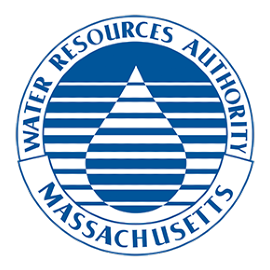Poster and Writing Contest Winners 2024-2025
We are pleased to announce the winners of our annual poster and writing contests.
The contest winners, along with their teachers and families, will be honored at an awards reception at the Metropolitan Waterwork Museum (located at 2450 Beacon Street, Chestnut Hill, MA 02467) on Friday, May 23, 2025.
All winning entries will be on display at the Museum from May through September. Check out the Waterworks Museum website for museum hours or contact Eleanor Katari, Manager of Museum Education Programs - Eleanor.Katari@waterworksmuseum.org
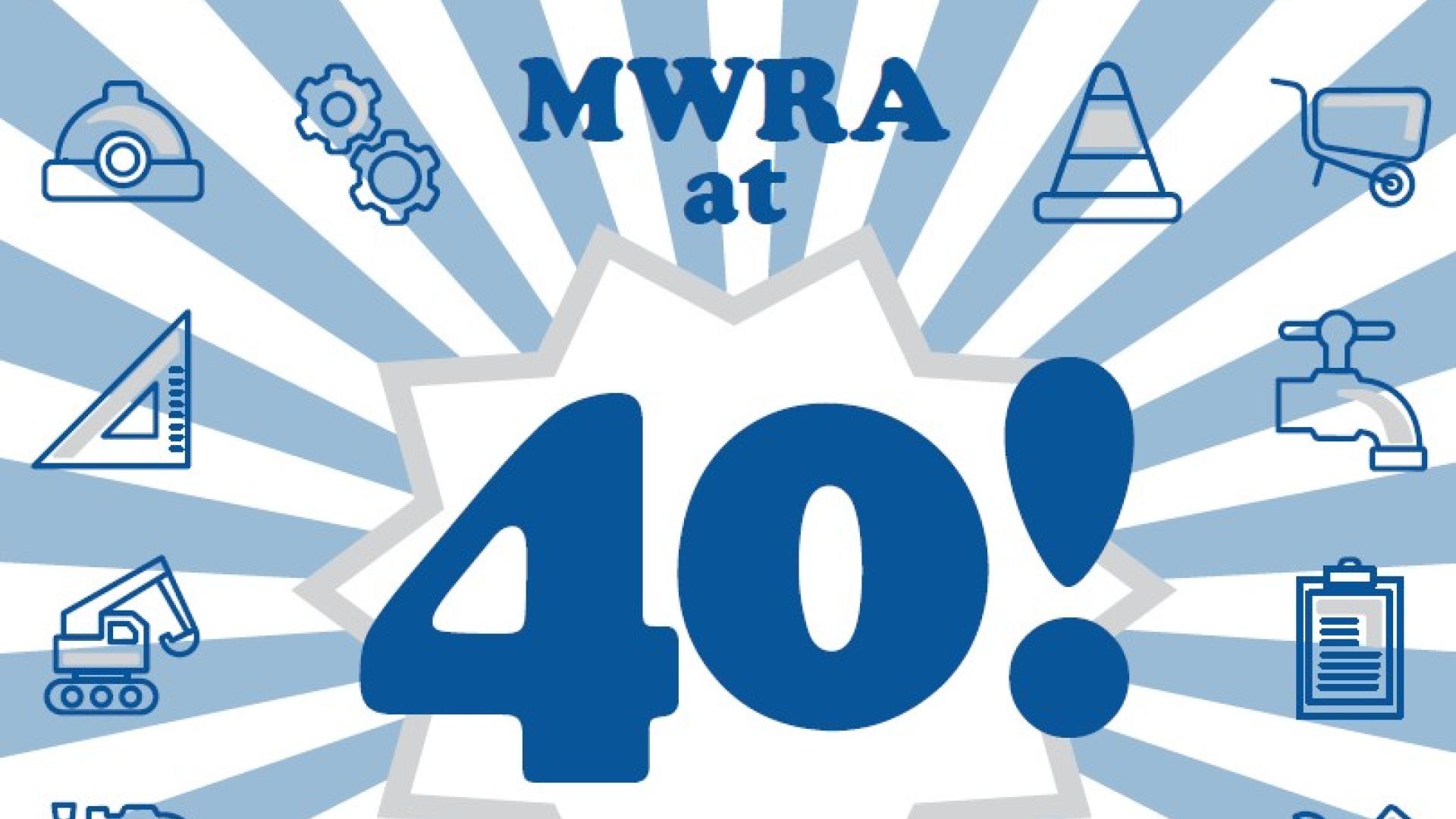
Poster Contest Winners K-2
| Poster Contest Winners, Grades K-2 | ||
|---|---|---|
| 1st Place | Orit Kehat | Lilja Elementary, Natick |
| 2nd Place | Amira El Fassi | Gorman Fort Banks Elementary, Winthrop |
| 3rd Place | Emily Waldron | Hill School, Revere |
| HM | Charlotte Richmond | Gorman Fort Banks Elementary, Winthrop |
| HM | Abby Bisesi | Richer Elementary, Marlborough |
| HM | Juan Alejandro Gonzalez | Gorman Fort Banks Elementary, Winthrop |
| HM | Ryan Soucy | Lilja Elementary, Natick |
First Place Winner, Grades K-2
Orit Kehat
Grade 2, Lilja Elementary, Natick
Beth Altchek, Teacher

Second Place Winner, Grades K-2
Amira El Fassi
Grade 2, Gorman Fort Banks Elementary, Winthrop
Marissa Greico, Teacher
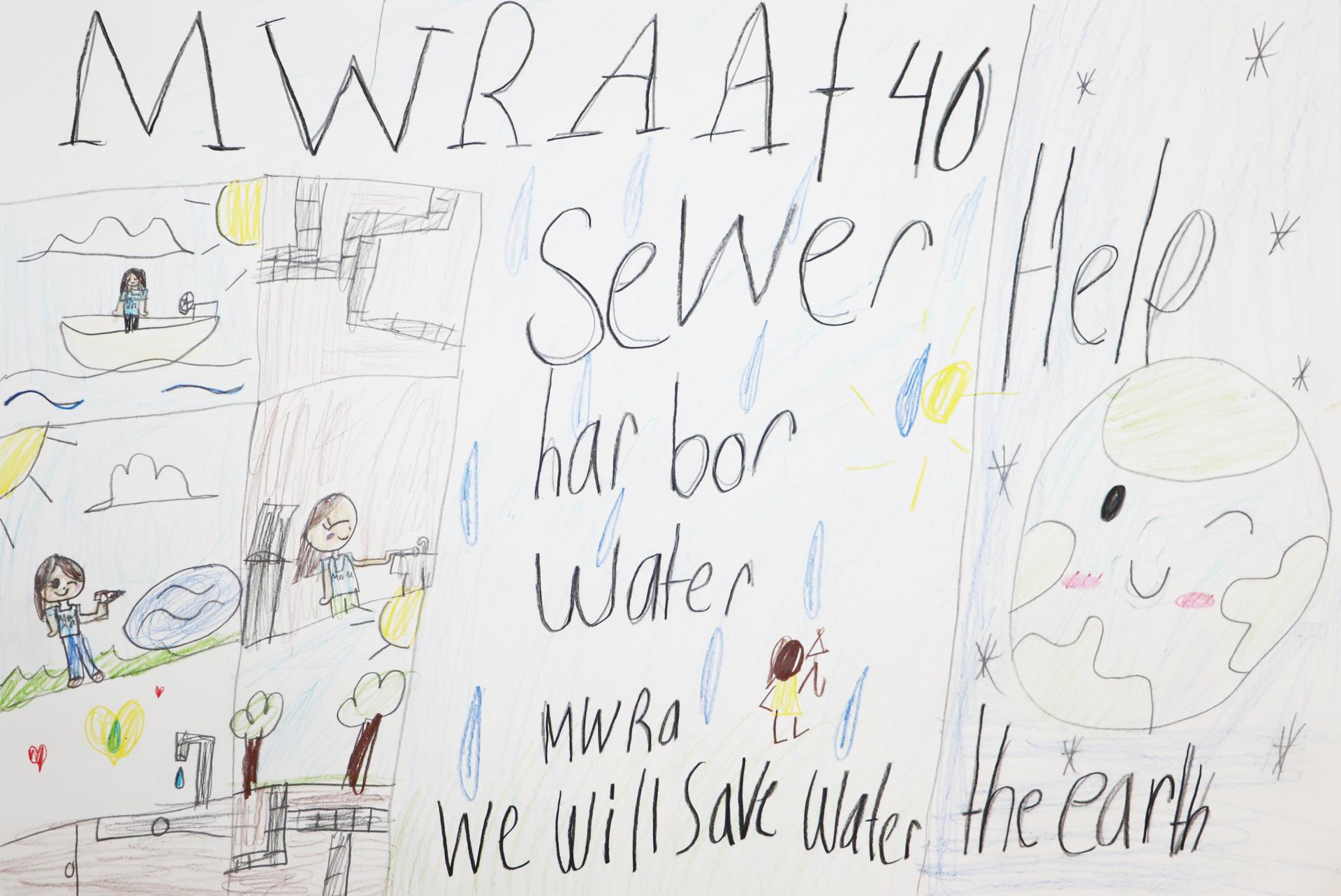
Third Place Winner, Grades K-2
Emily Waldron
Grade 2, Hill School, Revere
Susan Cuzzi, Teacher
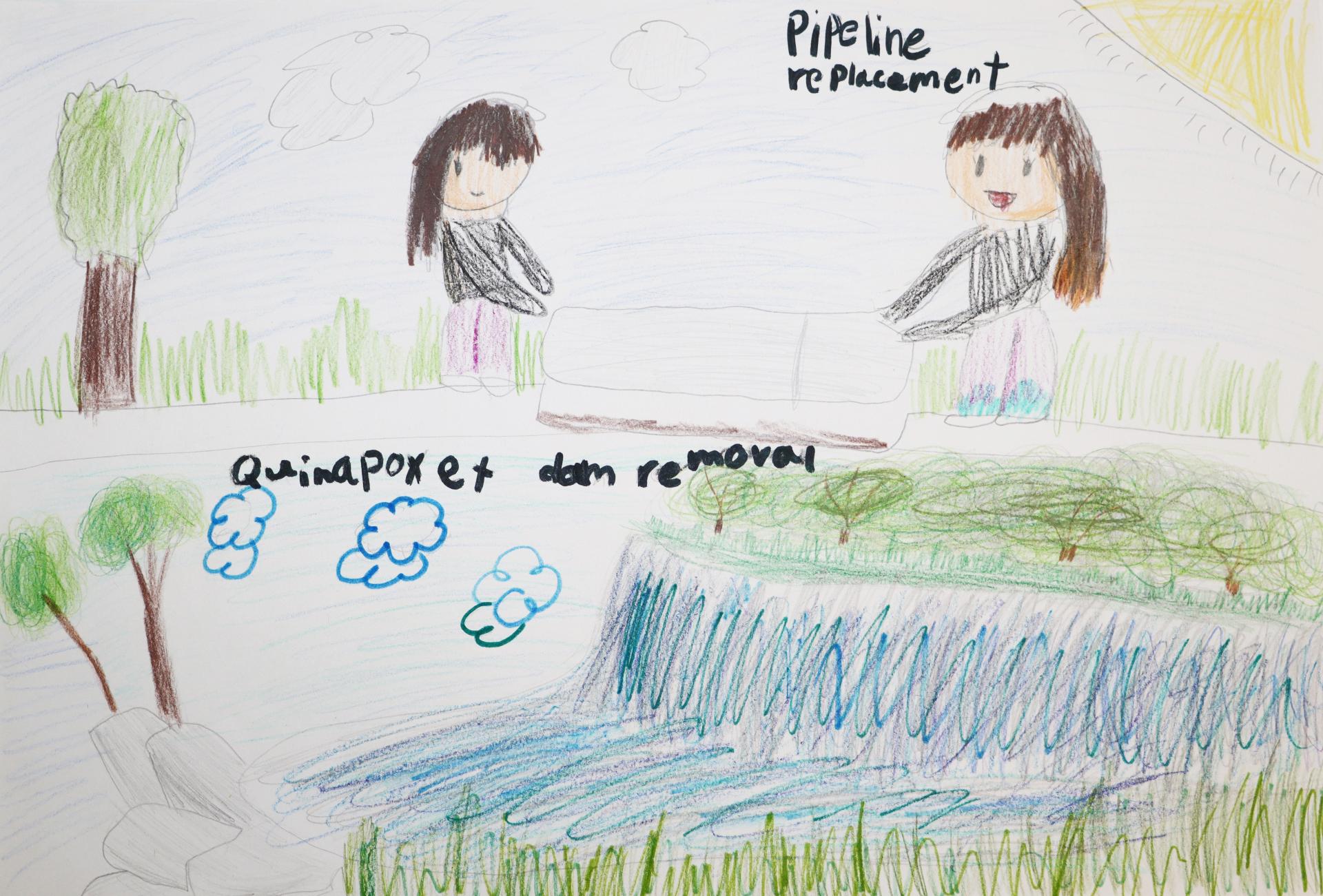
Honorable Mention Winner, Grades K-2
Charlotte Richmond
Grade 2, Gorman Fort Banks Elementary, Winthrop
Marissa Greico, Teacher
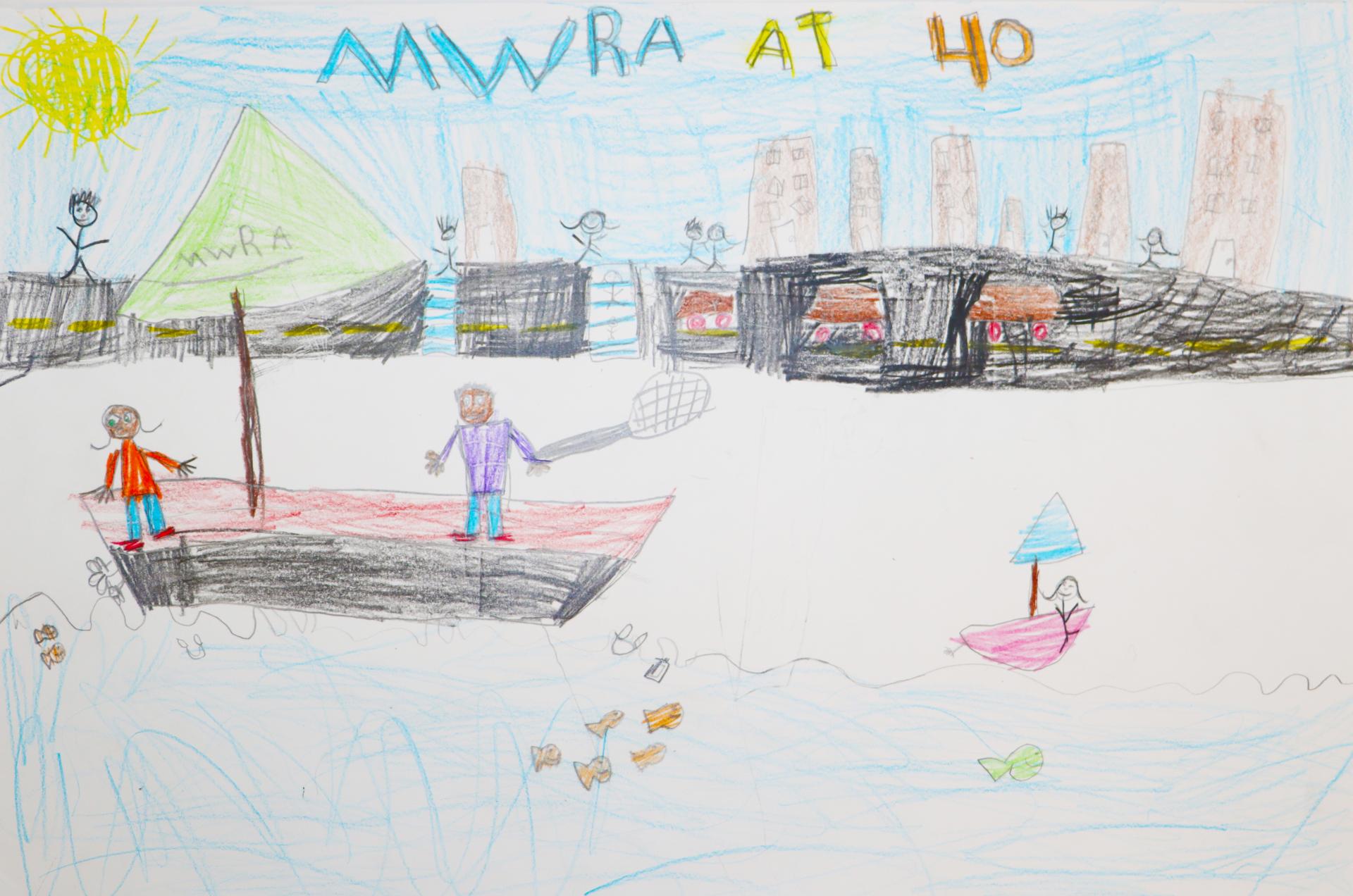
Honorable Mention Winner, Grades K-2
Abby Bisesi
Grade 2, Richer Elementary, Marlborough
Laura Zouharis, Teacher

Honorable Mention Winner, Grades K-2
Juan Alejandro Gonzalez
Grade 2, Gorman Fort Banks Elementary, Winthrop
Marissa Greico, Teacher
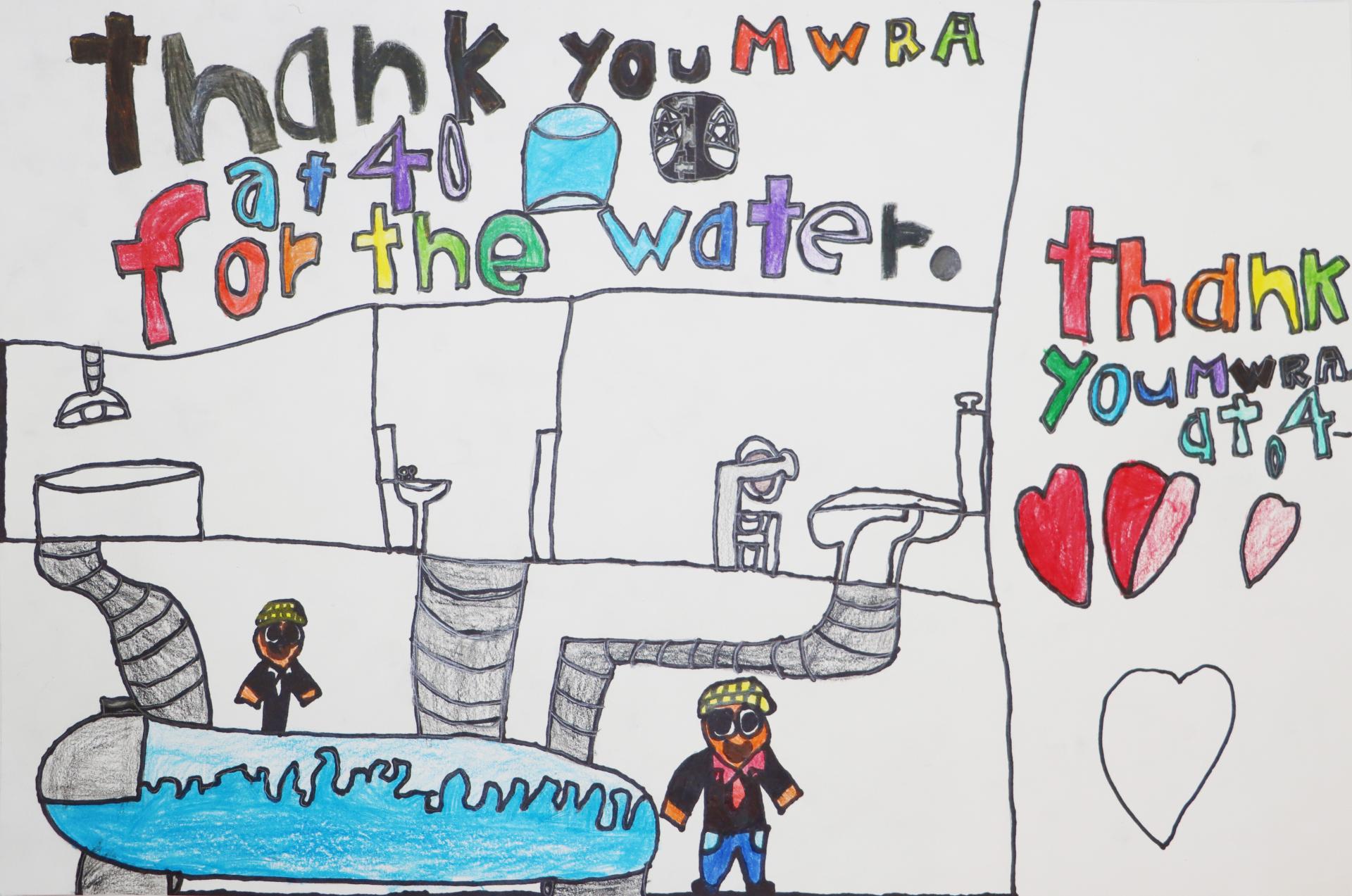
Honorable Mention Winner, Grades K-2
Ryan Soucy
Grade 2, Lilja Elementary, Natick
Beth Altchek, Teacher
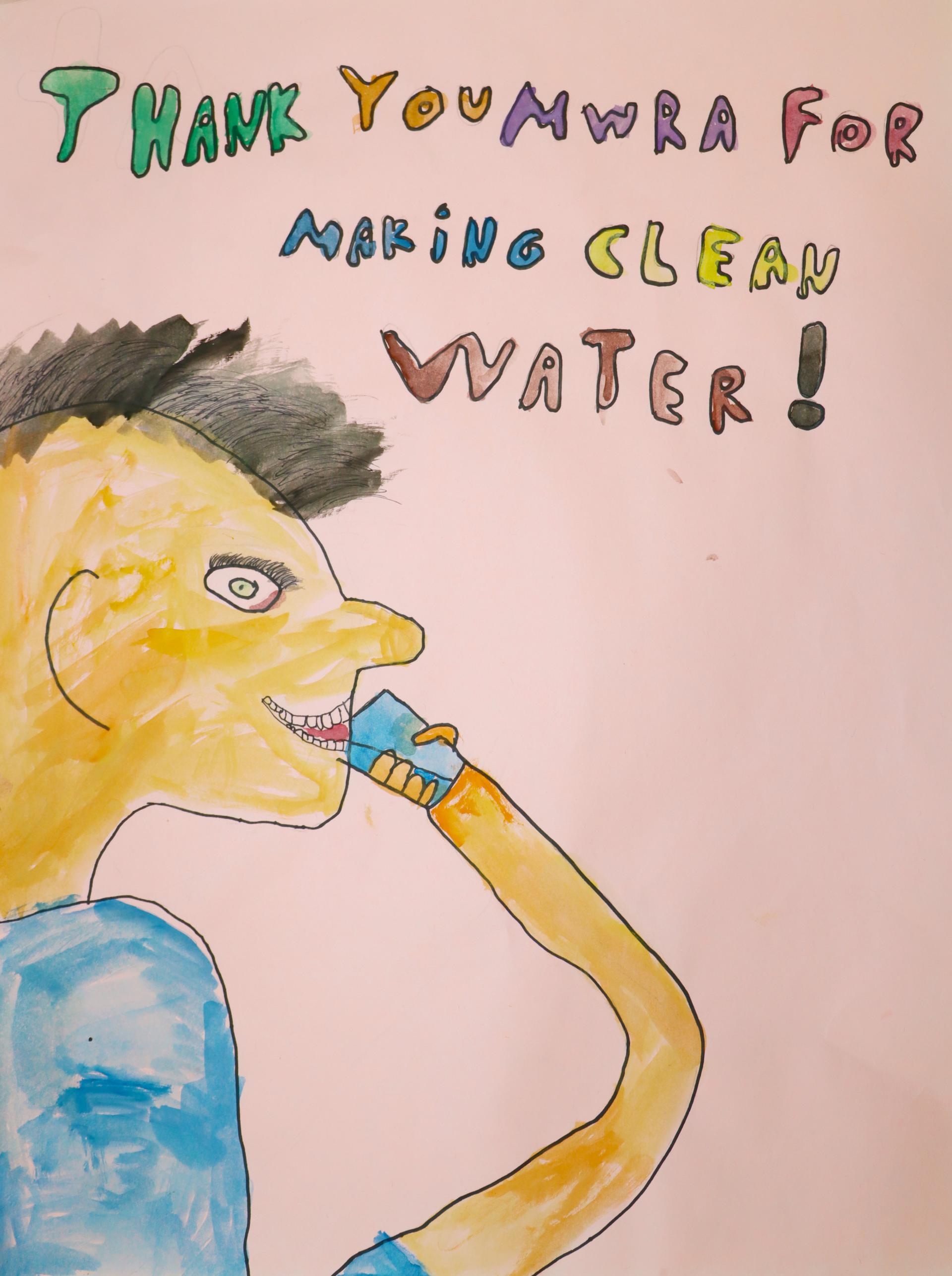
Poster Contest Winners 3-5
| Poster Contest Winners, Grades 3-5 | ||
|---|---|---|
| 1st Place | Isabella Valencia | Hill School, Revere |
| 2nd Place | James Rocco Pasquariello | A.T. Cummings Elementary, Winthrop |
| 3rd Place | Alaa Mehdi | Hill School, Revere |
| HM | Liana Reeves | A.T. Cummings Elementary, Winthrop |
| HM | Julia Garcia | Immaculate Conception, Revere |
| HM | Janna Allam | Hill School, Revere |
| HM | Sophie Haran | Brackett Elementary, Arlington |
First Place Winner, Grades 3-5
Isabella Valencia
Grade 5, Hill School, Revere
Maggie McAllister, Teacher
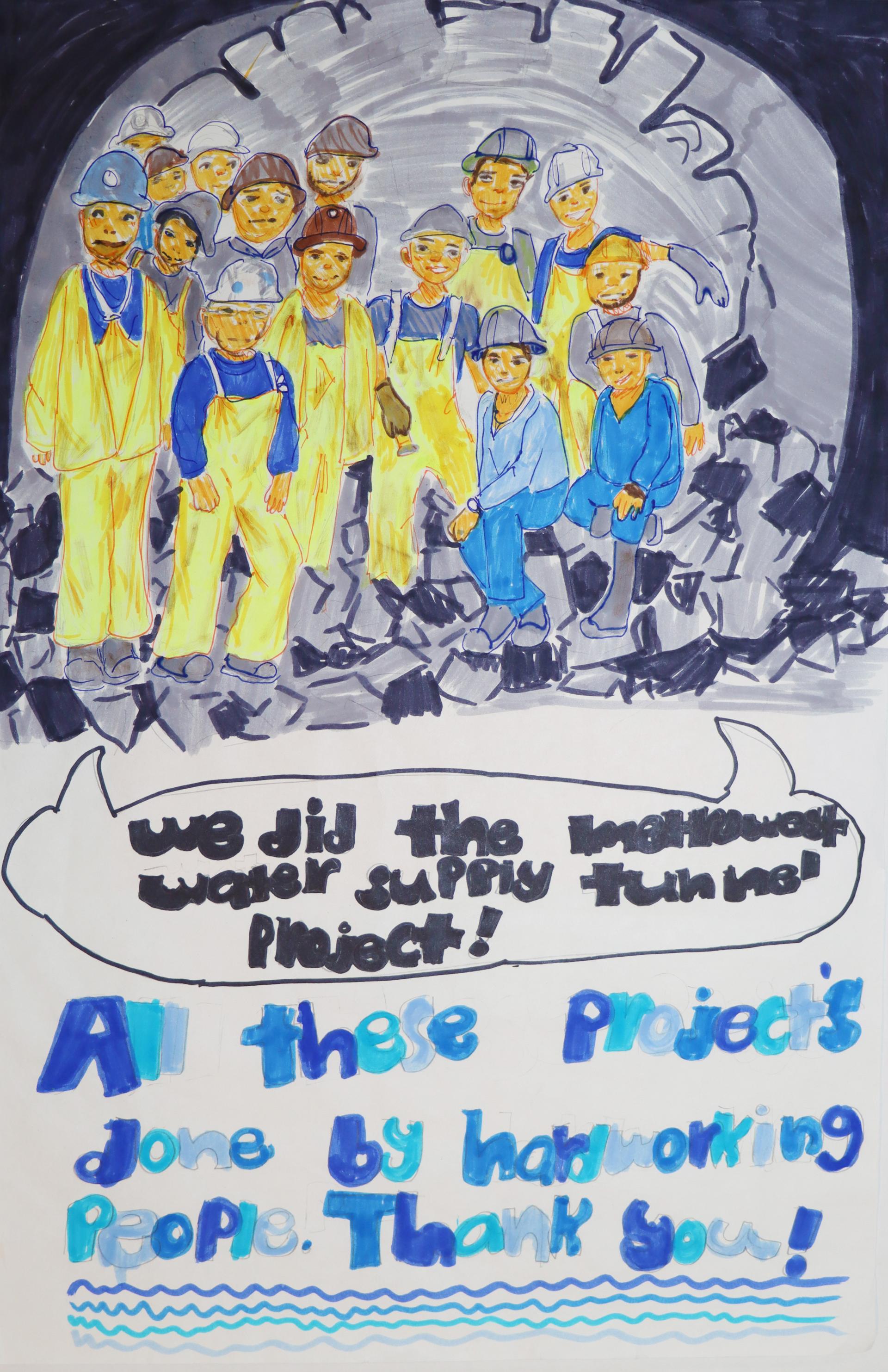
Second Place Winner, Grades 3-5
James Rocco Pasquariello
Grade 4, A.T. Cummings, Winthrop
Connie Grayson, Teacher
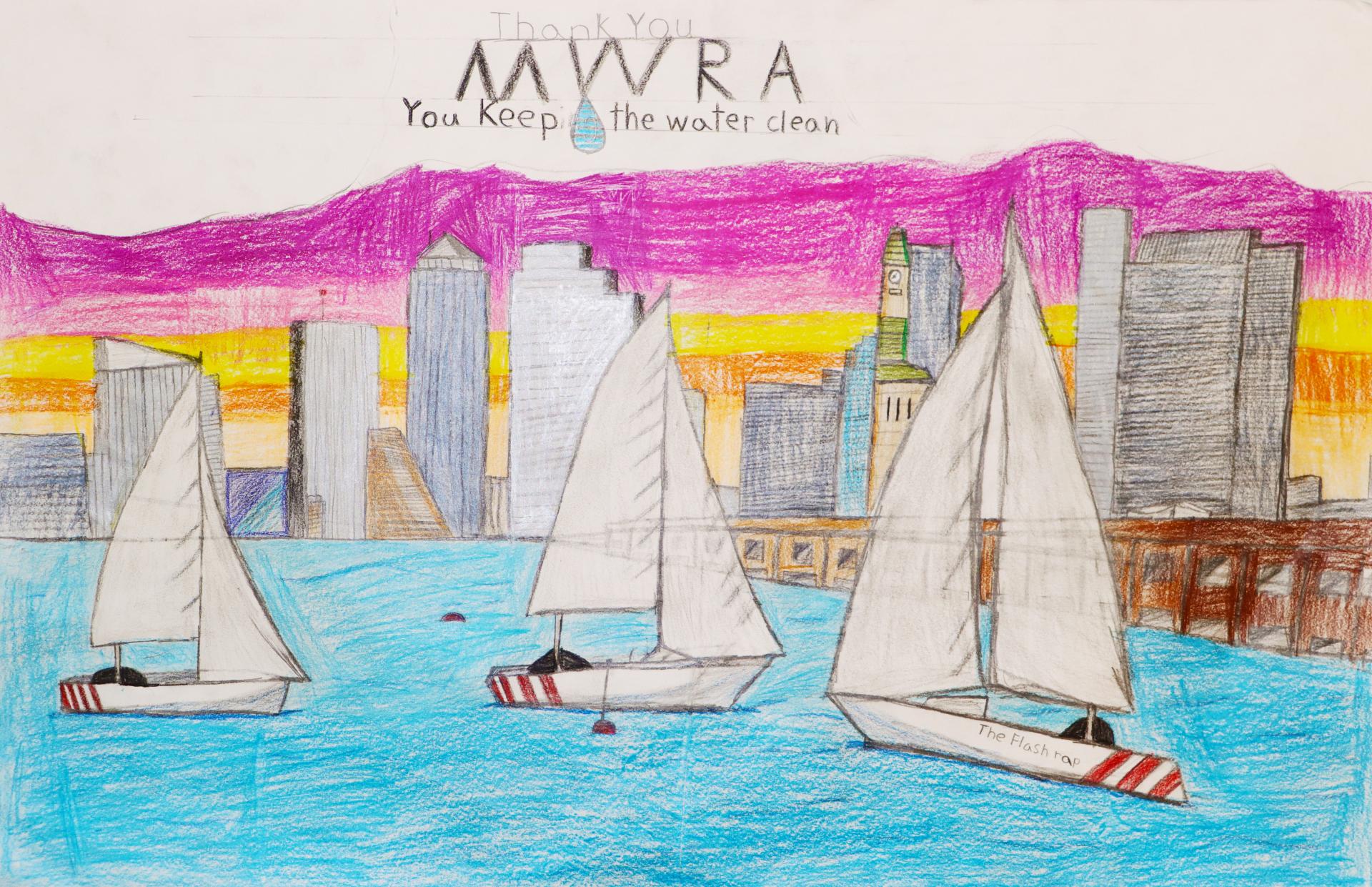
Third Place Winner, Grades 3-5
Alaa Mehdi
Grade 5, Hill School, Revere
Andrea Tufo, Teacher
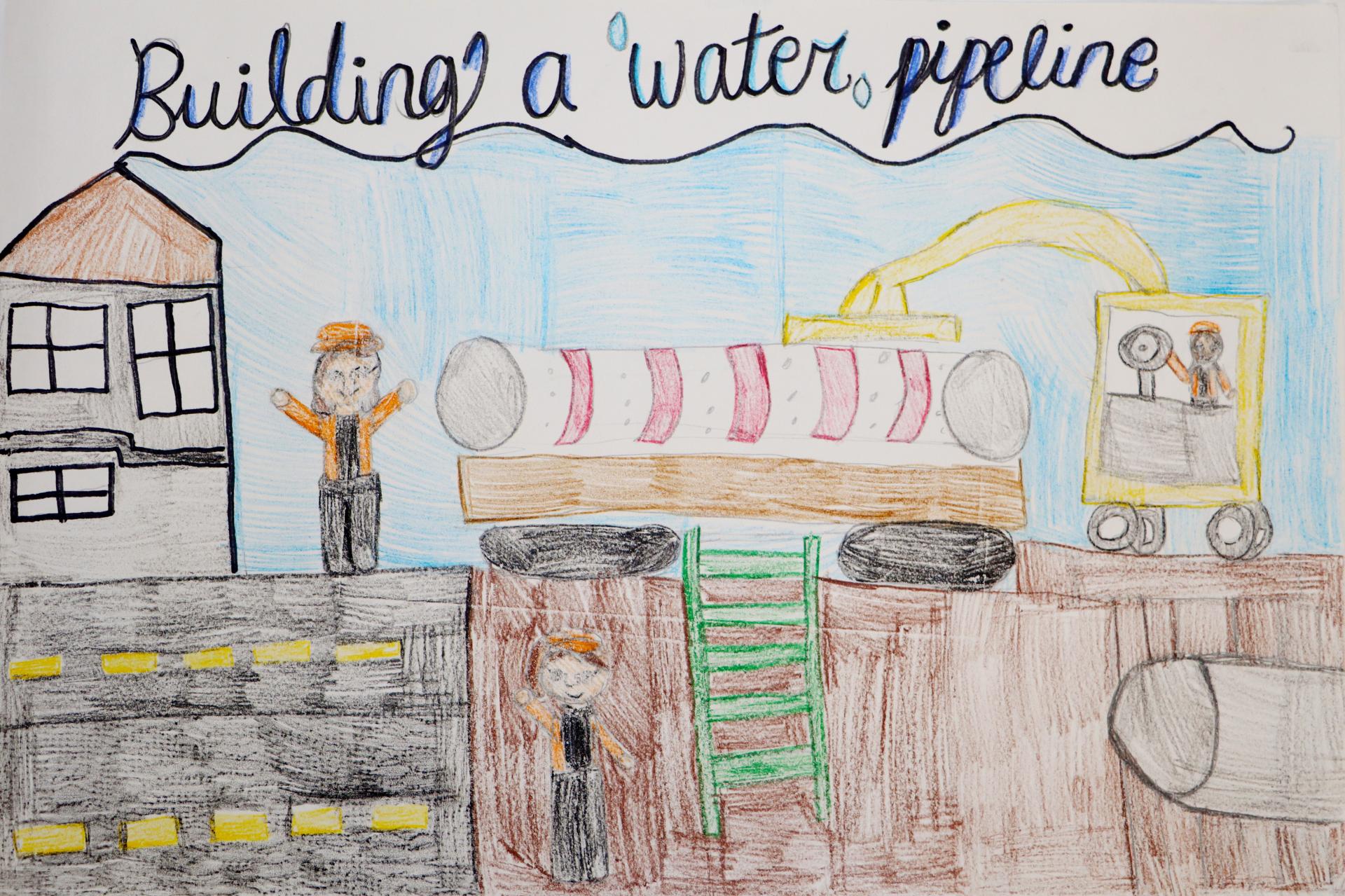
Honorable Mention Winner, Grades 3-5
Liana Reeves
Grade 5, A.T. Cummings, Winthrop
Christina Keeley, Teacher
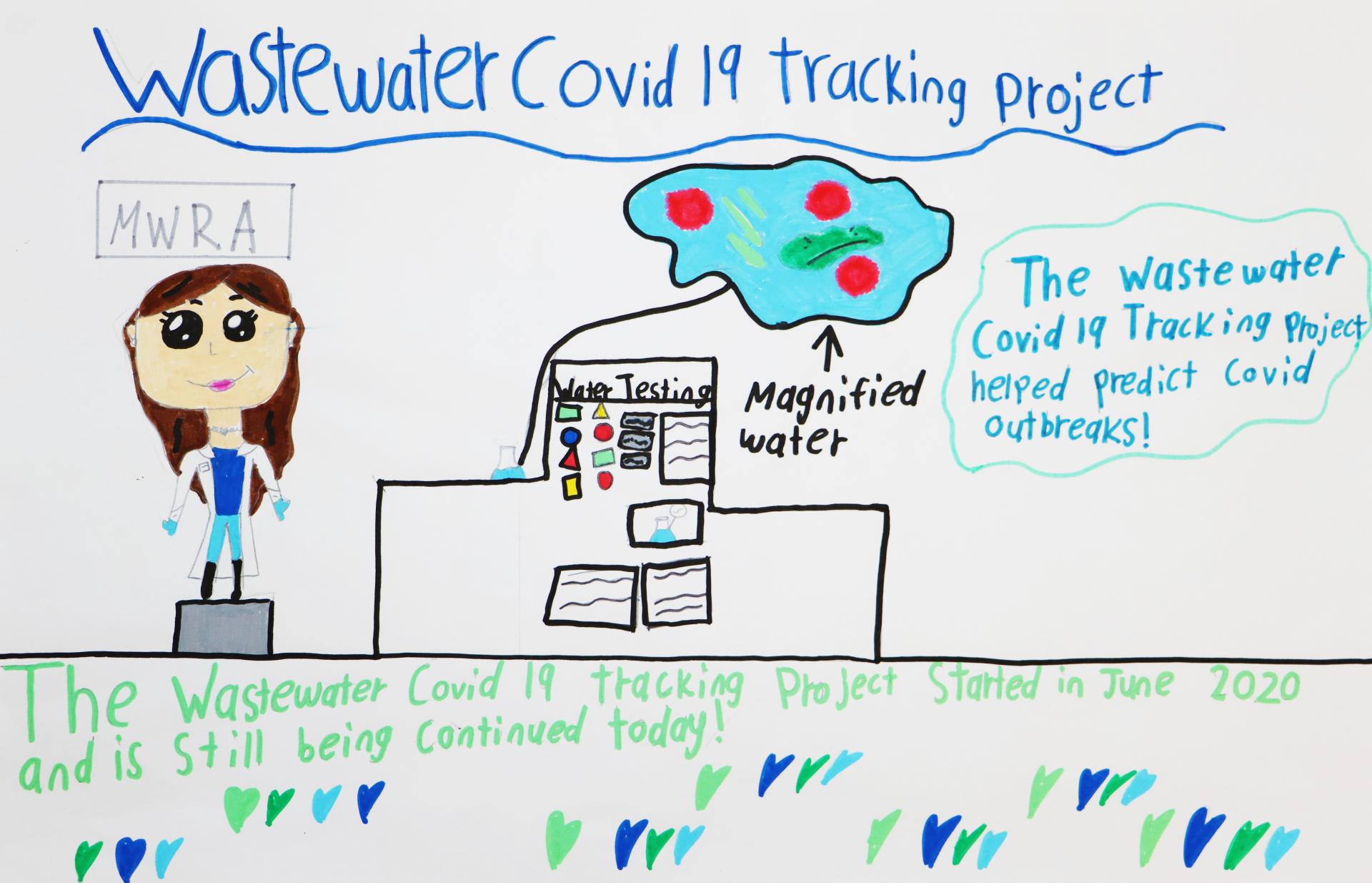
Honorable Mention Winner, Grades 3-5
Julia Garcia
Grade 5, Immaculate Conception, Revere
Lynne Callahan, Teacher
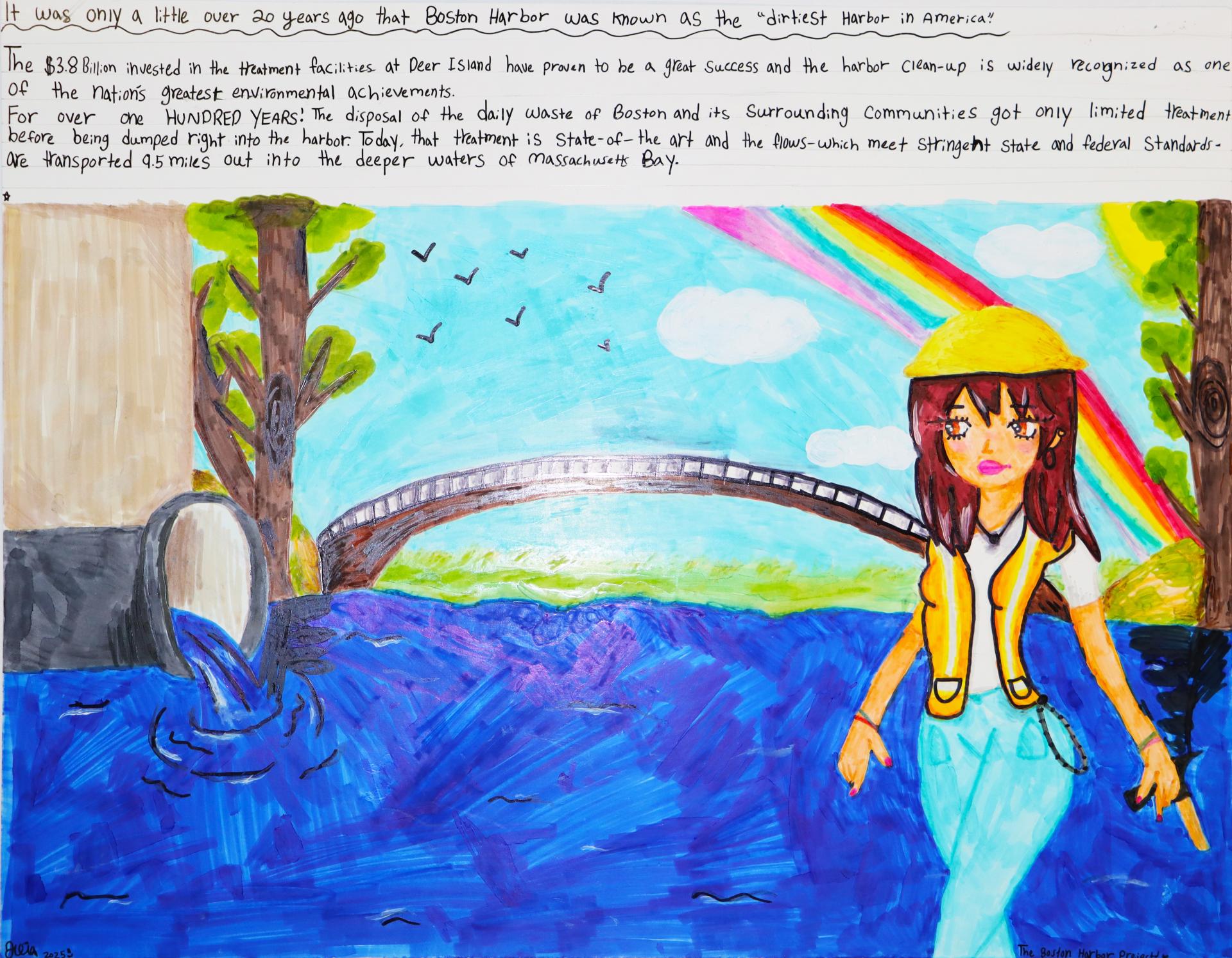
Honorable Mention Winner, Grades 3-5
Janna Allam
Grade 5, Hill School, Revere
Andrea Tufo, Teacher
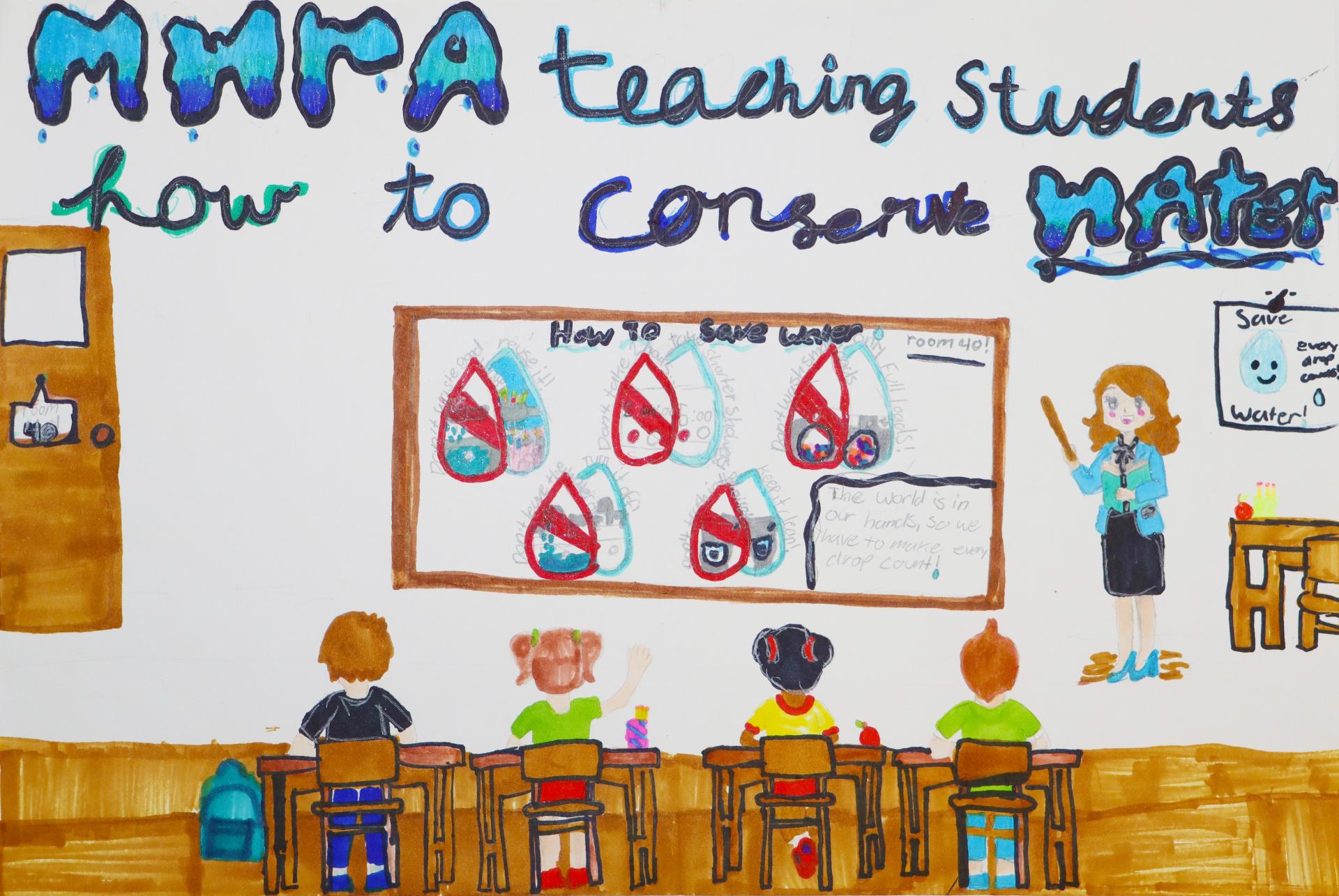
Honorable Mention Winner, Grades 3-5
Sophie Haran
Grade 5, Brackett Elementary, Arlington
Heather Lowe, Teacher
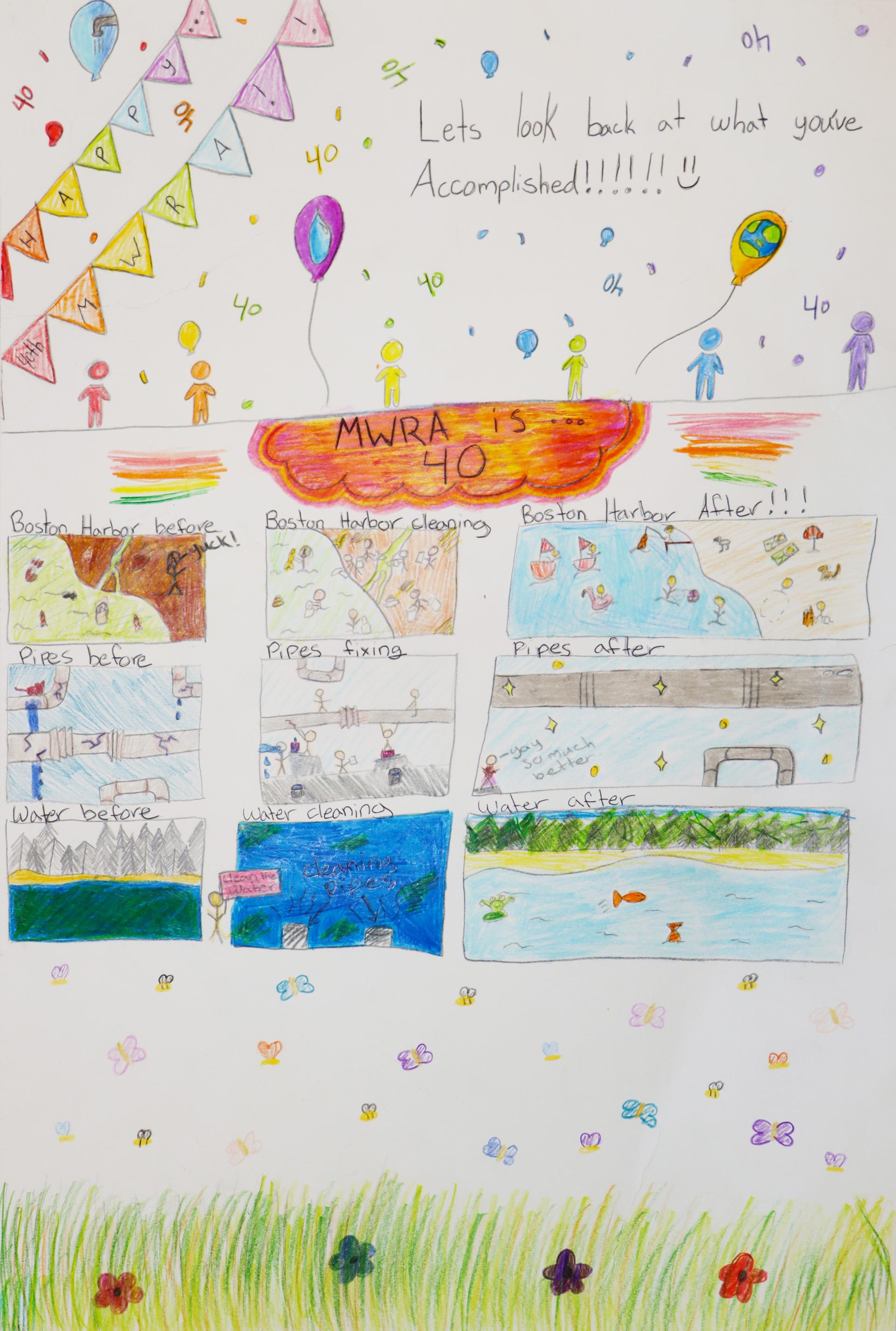
Poster Contest Winners 6-8
| Poster Contest Winners, Grades 6-8 | ||
|---|---|---|
| 1st Place | Emma Qiu | McCall Middle School, Winchester |
| 2nd Place | Aleksandran Pezaris | McCall Middle School, Winchester |
| 3rd Place | Valery Vasquez Villagran | Parlin School, Everett |
| HM | Daniel Aksianov | McCall Middle School, Winchester |
| HM | Ariya Curtin | McCall Middle School, Winchester |
| HM | Arthur Sawitzky-Bonner | Andrews Middle School, Medford |
| HM | Ashley Portillo-Aguilar | Parlin School, Everett |
First Place Winner, Grades 6-8
Emma Qiu
Grade 6, McCall Middle School, Winchester
Missy McBride, Teacher
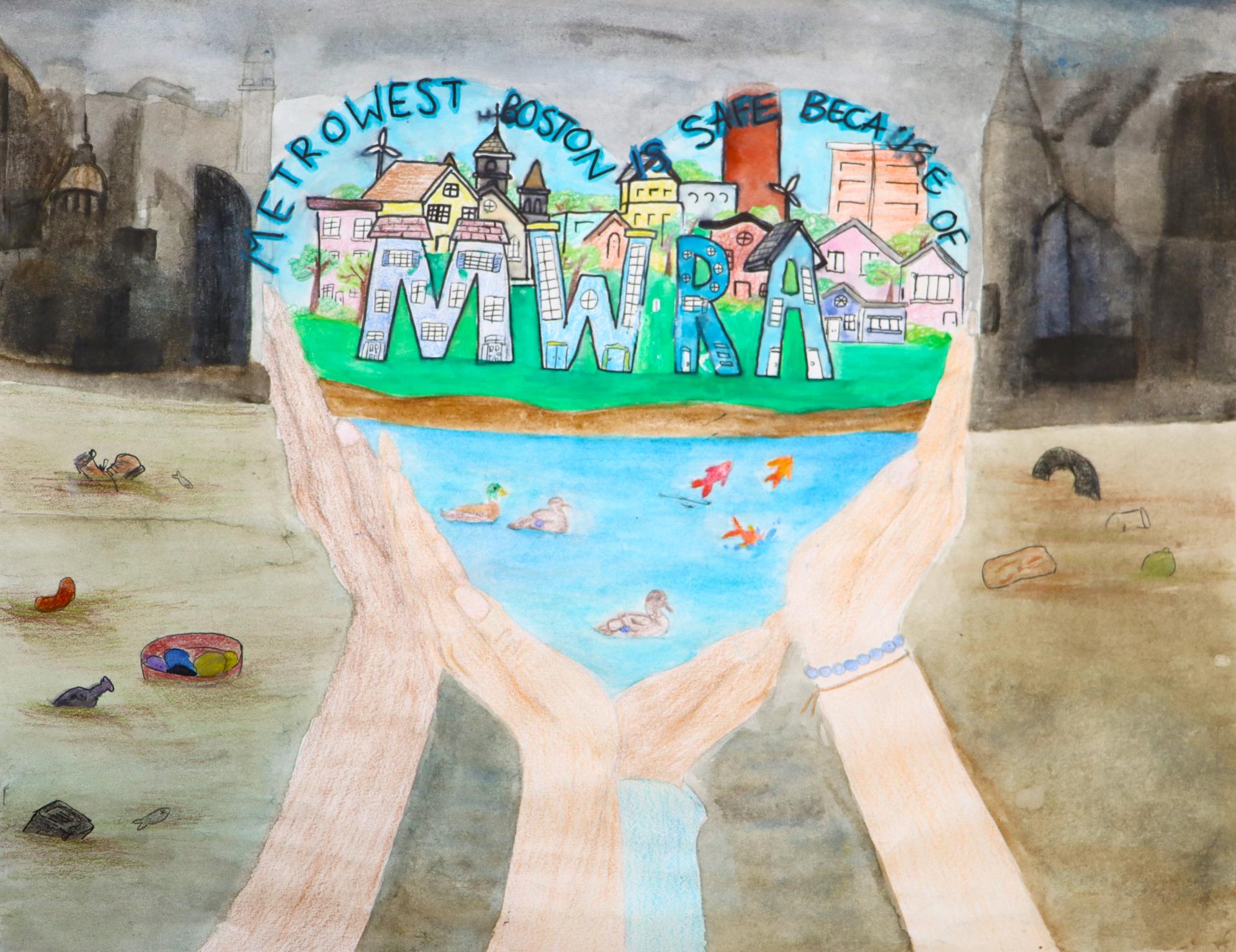
Second Place Winner, Grades 6-8
Aleksandra Pezaris
Grade 8, McCall Middle School, Winchester
Student Submitted
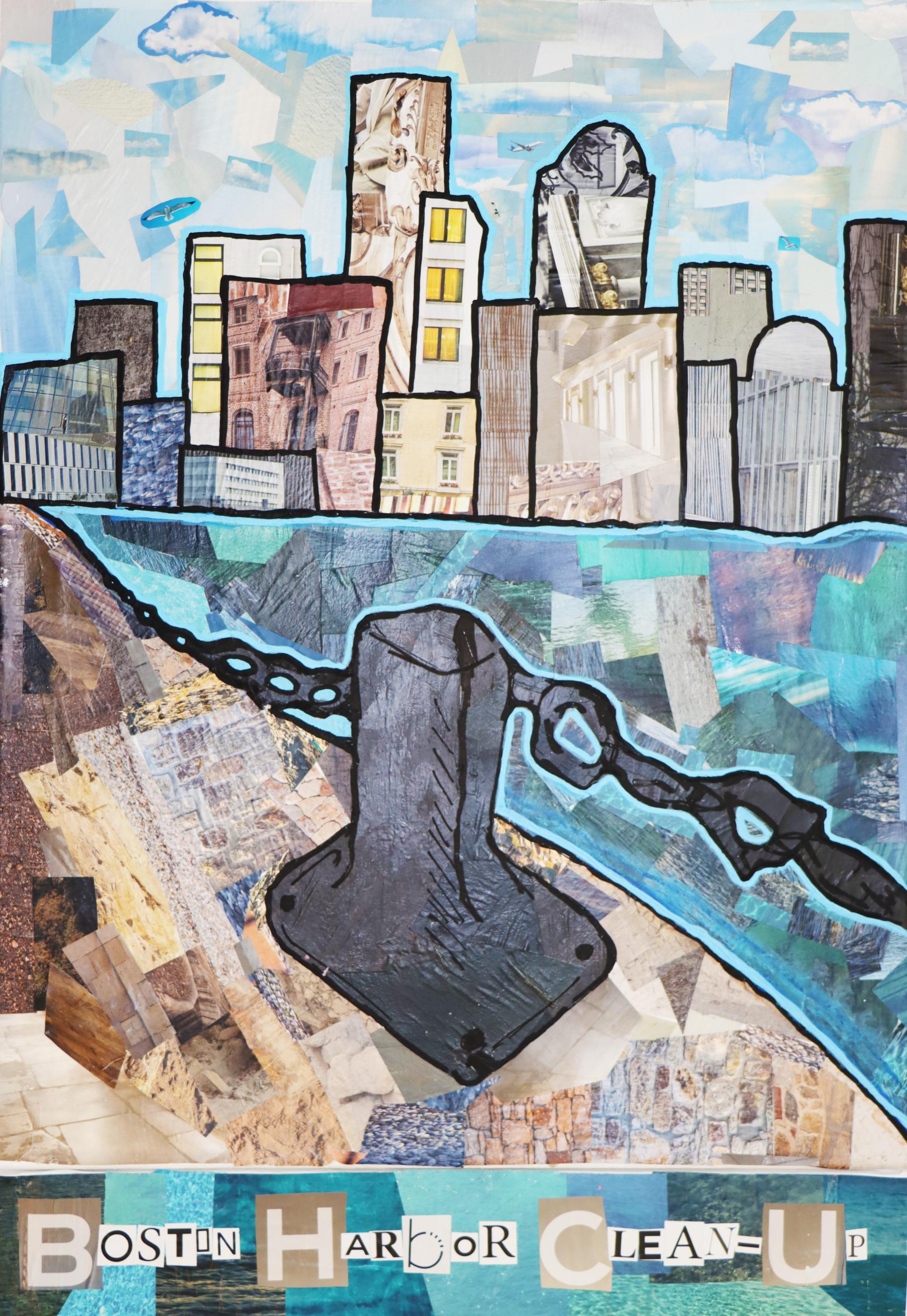
Third Place Winner, Grades 6-8
Valery Vasquez Villagran
Grade 6, Parlin School, Everett
Katelyn Crossley, Teacher
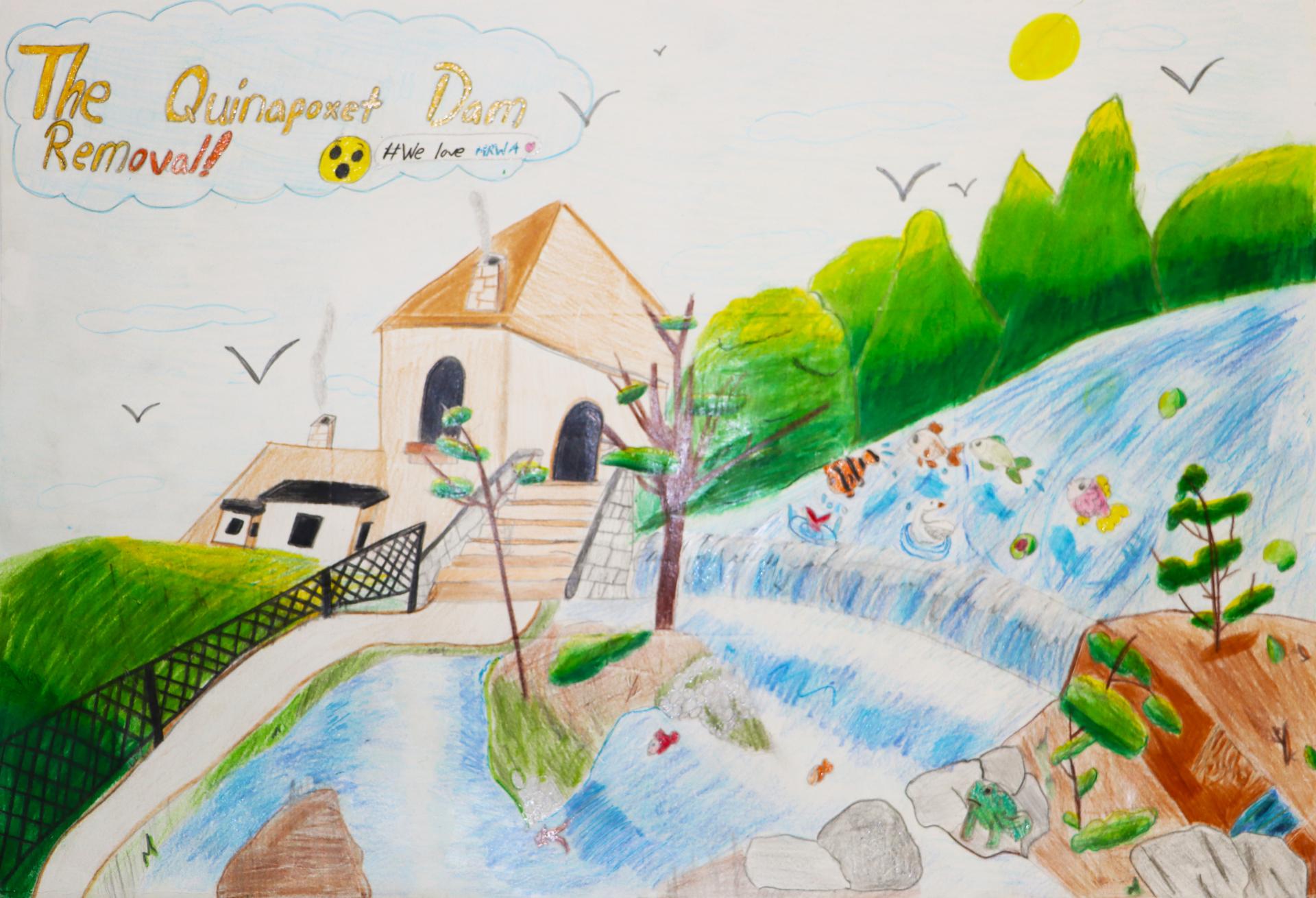
Honorable Mention Winner, Grades 6-8
Daniel Aksianov
Grade 6, McCall Middle School, Winchester
Meg Capobianco-Burns, Teacher

Honorable Mention Winner, Grades 6-8
Ariya Curtin
Grade 6, McCall Middle School, Winchester
Meg Capobianco-Burns, Teacher
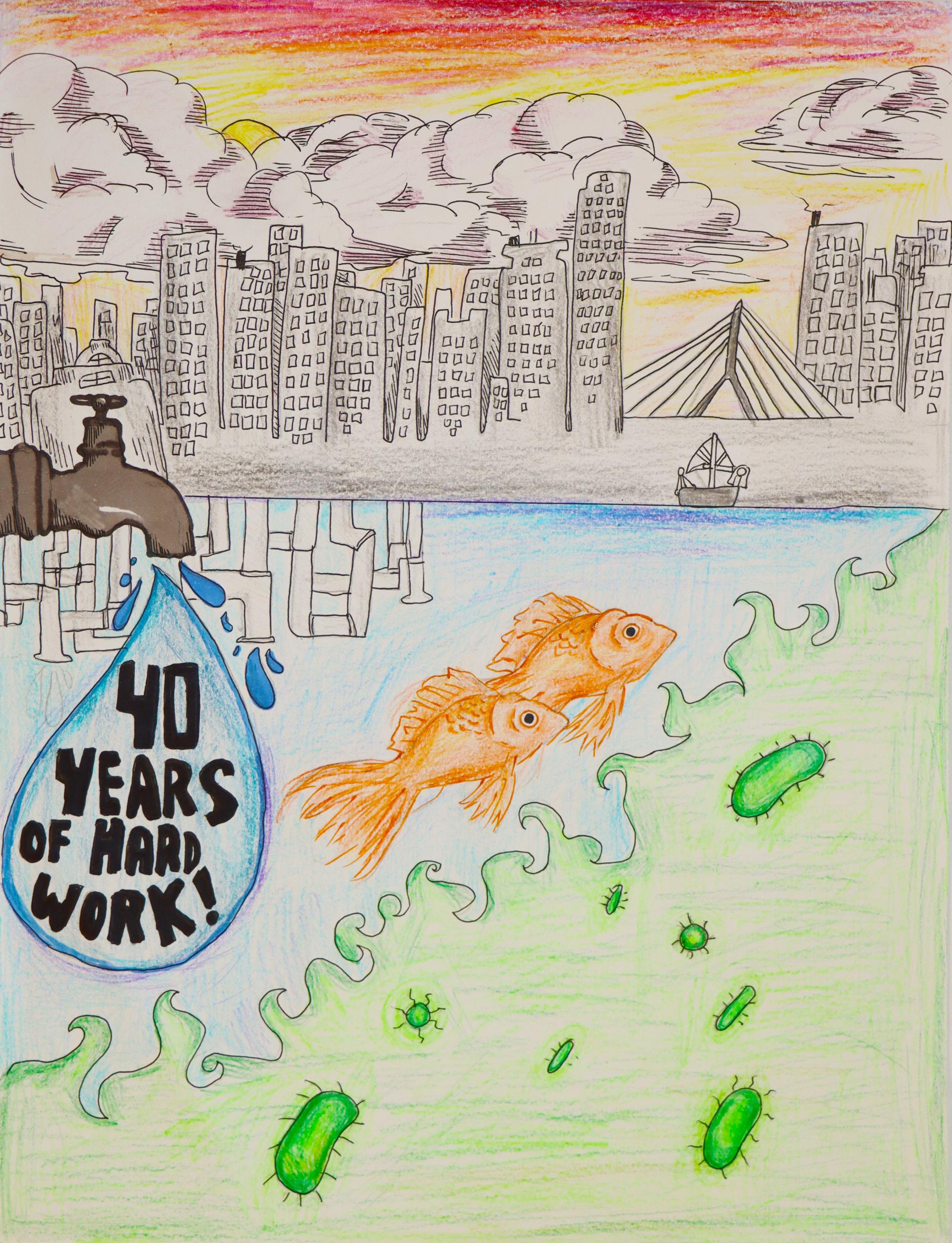
Honorable Mention Winner, Grades 6-8
Arthur Sawitzky-Bonner
Grade 6, Andrews Middle School, Medford
Kerry Bronnenkant, Teacher
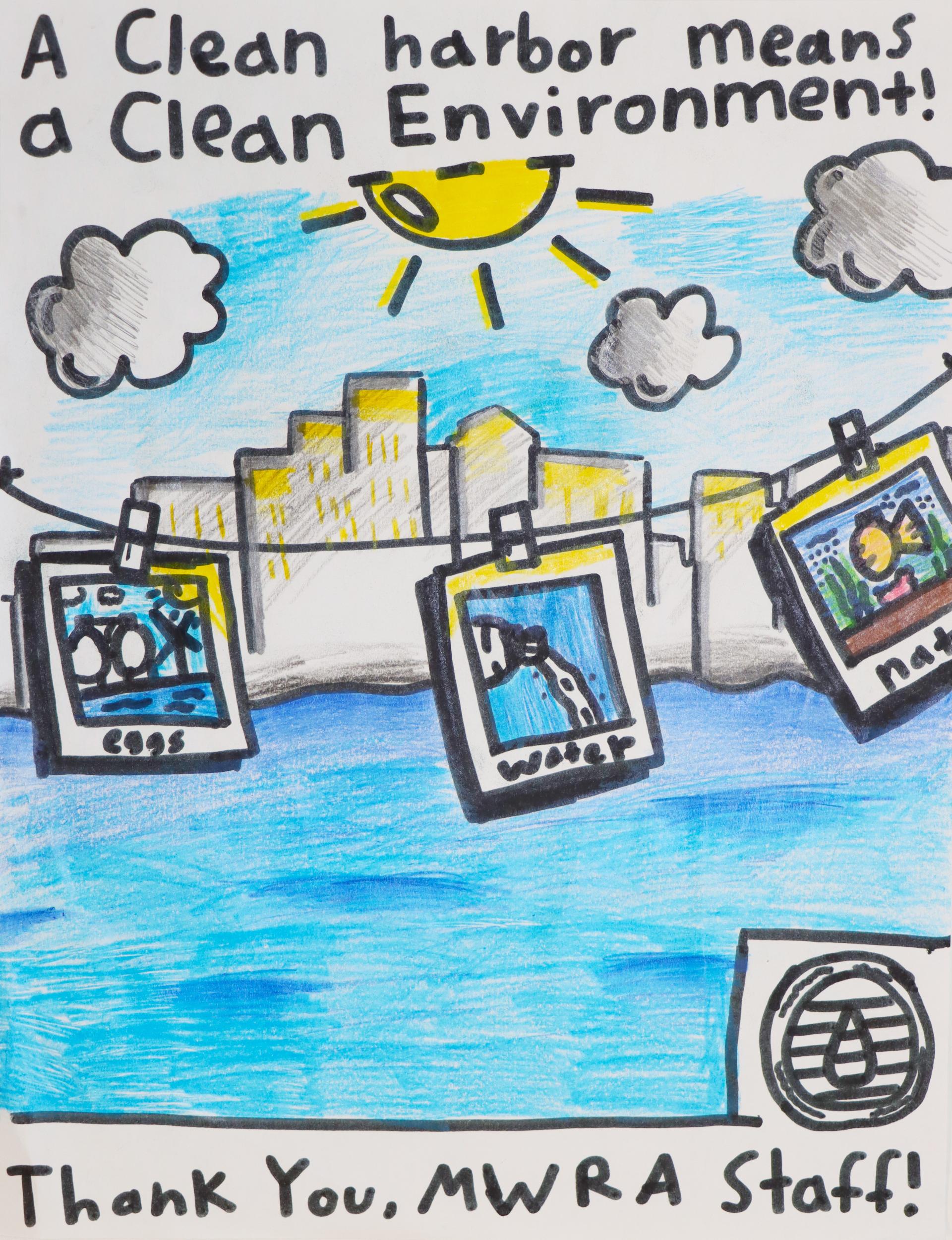
Honorable Mention Winner, Grades 6-8
Ashley Portillo-Aguilar
Grade 6, Parlin School, Everett
Kerri Grace, Teacher
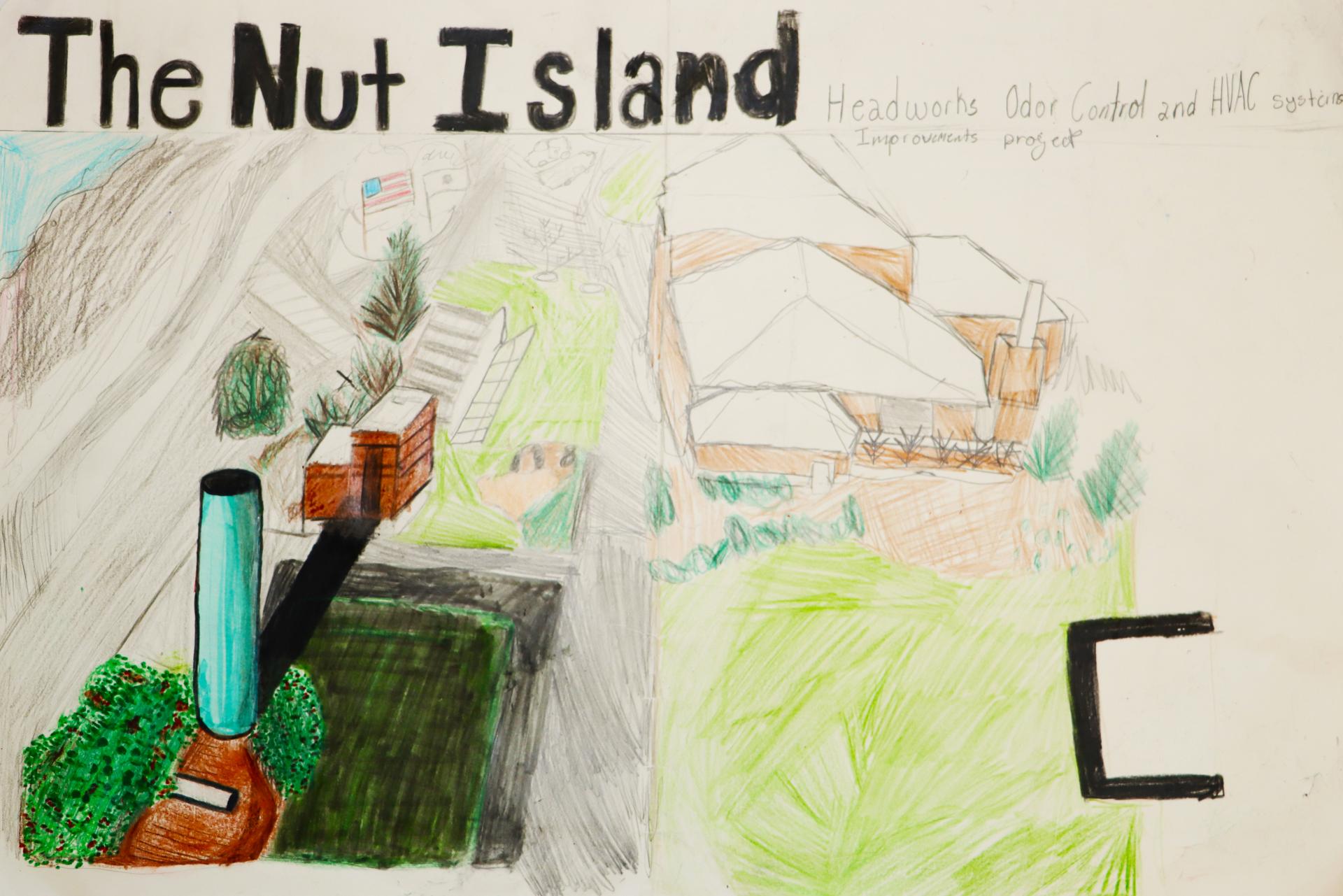
Poster Contest Winners 9-12
| Poster Contest Winners, Grades 9-12 | ||
|---|---|---|
| 1st Place | Cindy Huynh | Randolph High School, Randolph |
| 2nd Place | Davina Tang | Randolph High School, Randolph |
| 3rd Place | Lydia Scharer | Arlington High School (student submitted), Arlington |
| HM | Shama Silverberg | Norfolk County Agricultural High School, Walpole |
| HM | Zoralis Anderson | Randolph High School, Randolph |
| HM | Jeremy Nolasco | New Mission High School, Boston |
| HM | Emily Ly | Randolph High School, Randolph |
First Place Winner, Grades 9-12
Cindy Huynh
Grade 9, Randolph High School, Randolph
Chakara Cardillo, Teacher
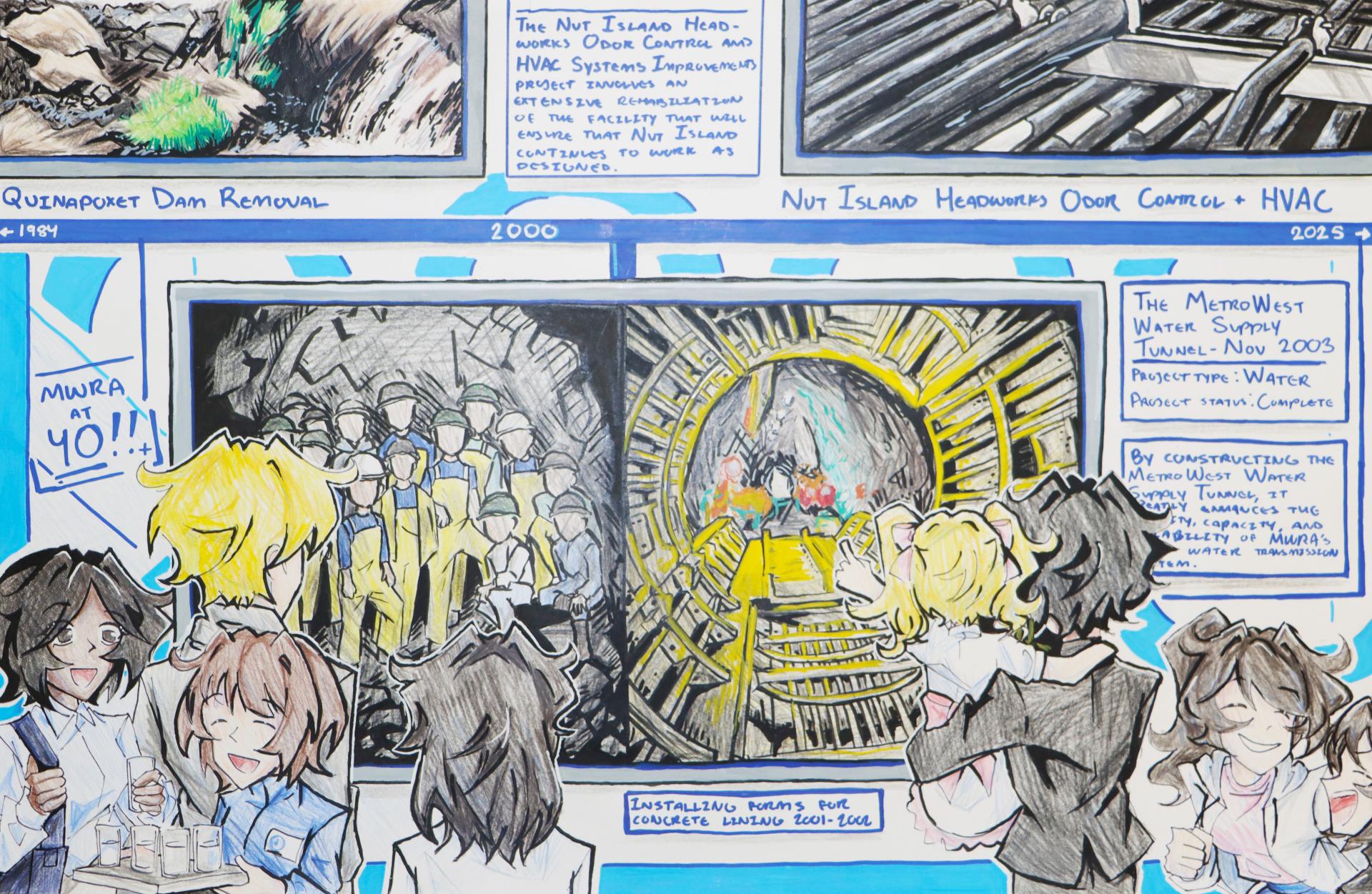
Second Place Winner, Grades 9-12
Davina Tang
Grade 9, Randolph High School, Randolph
Chakara Cardillo, Teacher
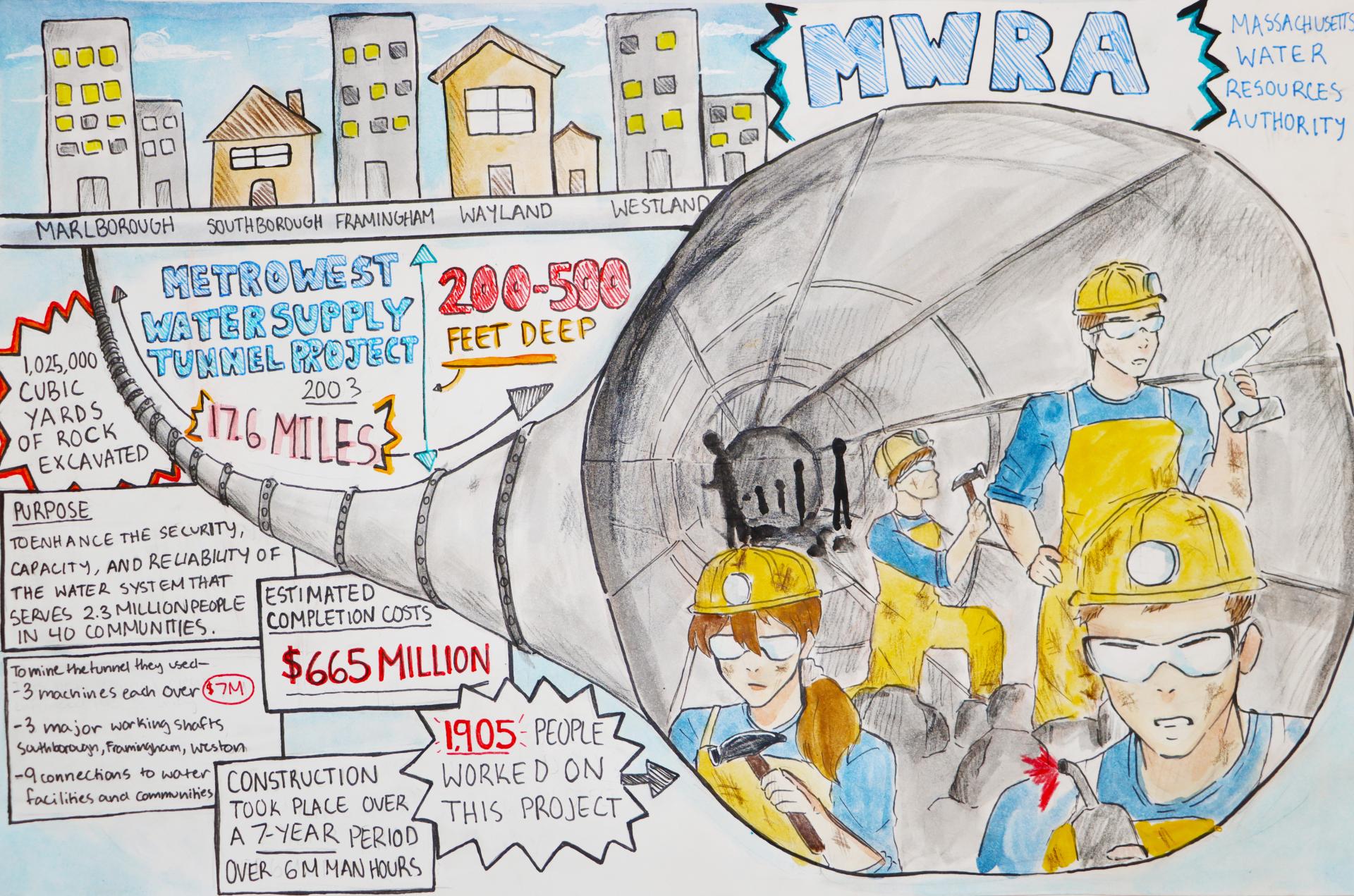
Third Place Winner, Grades 9-12
Lydia Scharer
Grade 10, Arlington High School, Arlington
Student Submitted
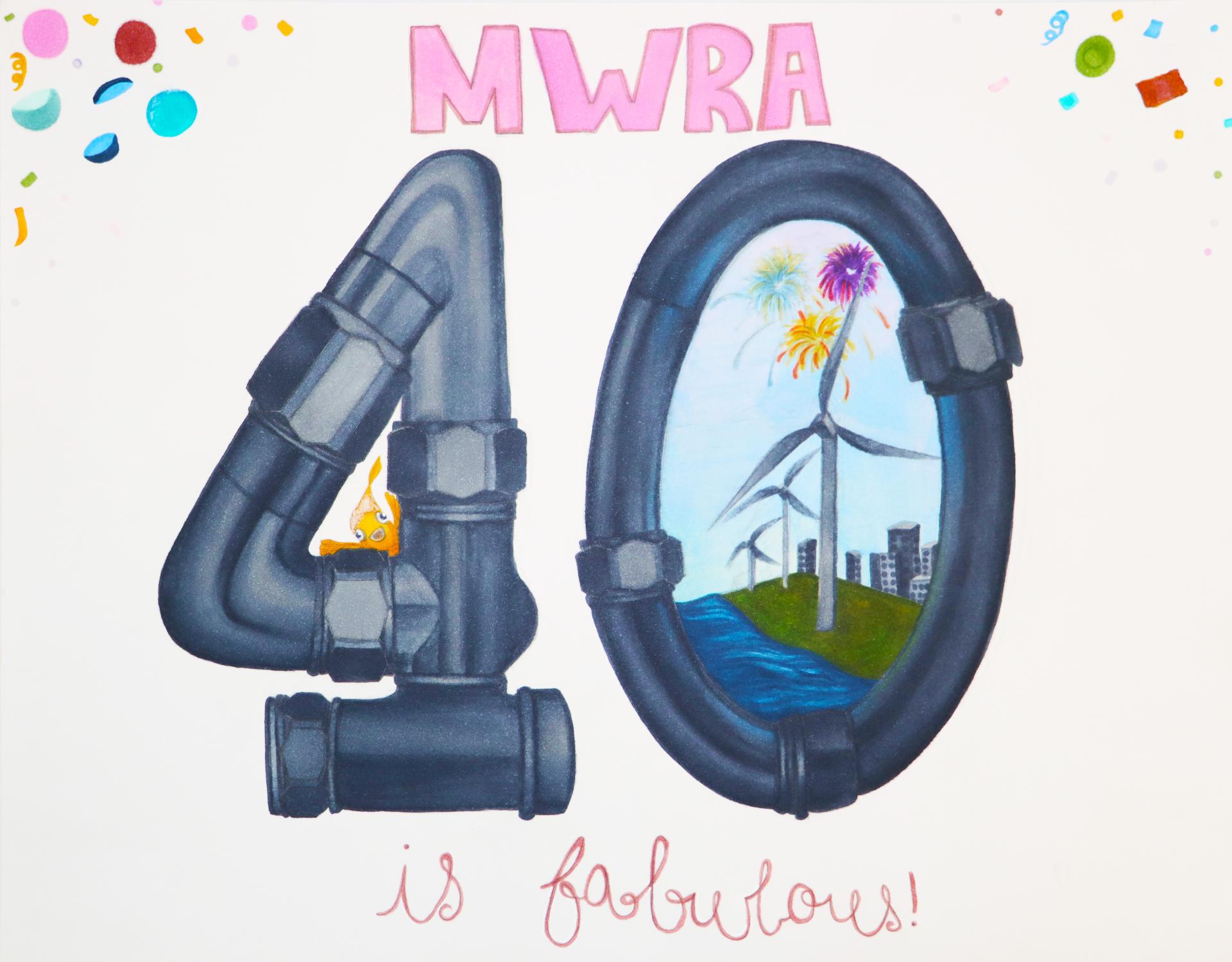
Honorable Mention Winner, Grades 9-12
Shama Silverberg
Grade 11, Norfolk County Agricultural High School, Walpole
Val Stone, Teacher
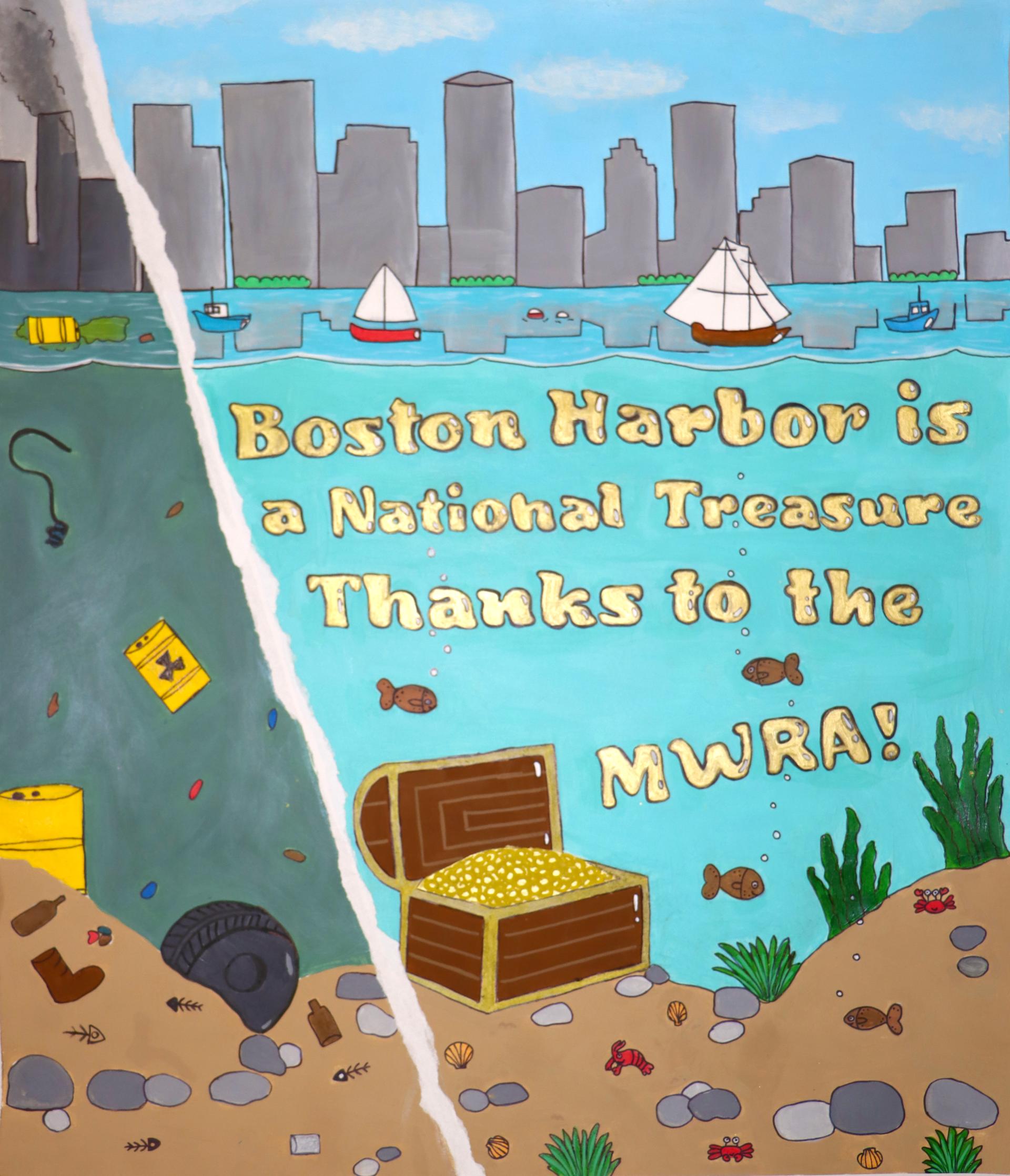
Honorable Mention Winner, Grades 9-12
Zoralis Anderson
Grade 9, Randolph High School, Randolph
Chakara Cardillo, Teacher
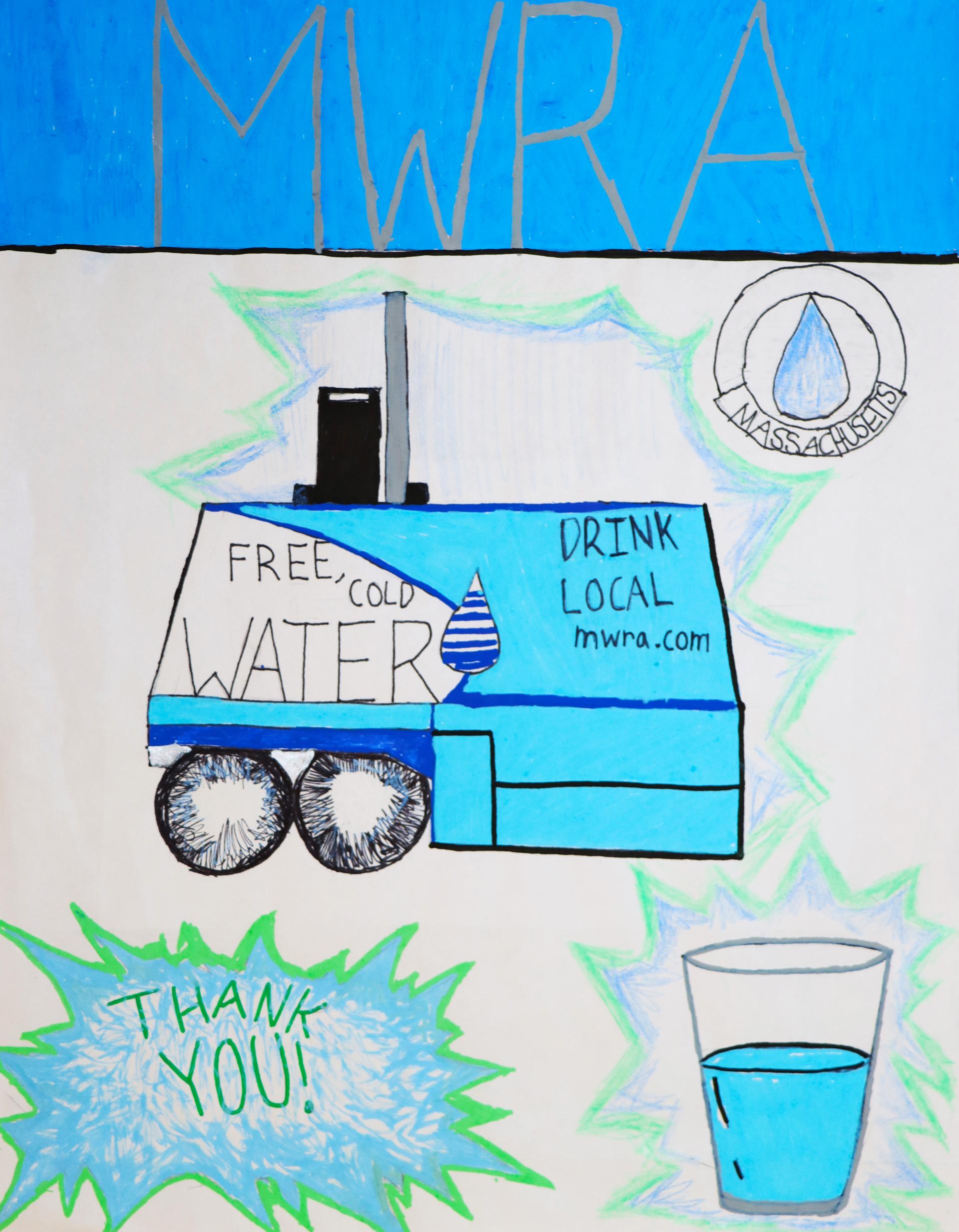
Honorable Mention Winner, Grades 9-12
Jeremy Nolasco
Grade 9, New Mission High School, Boston
Jennifer Dines, Teacher
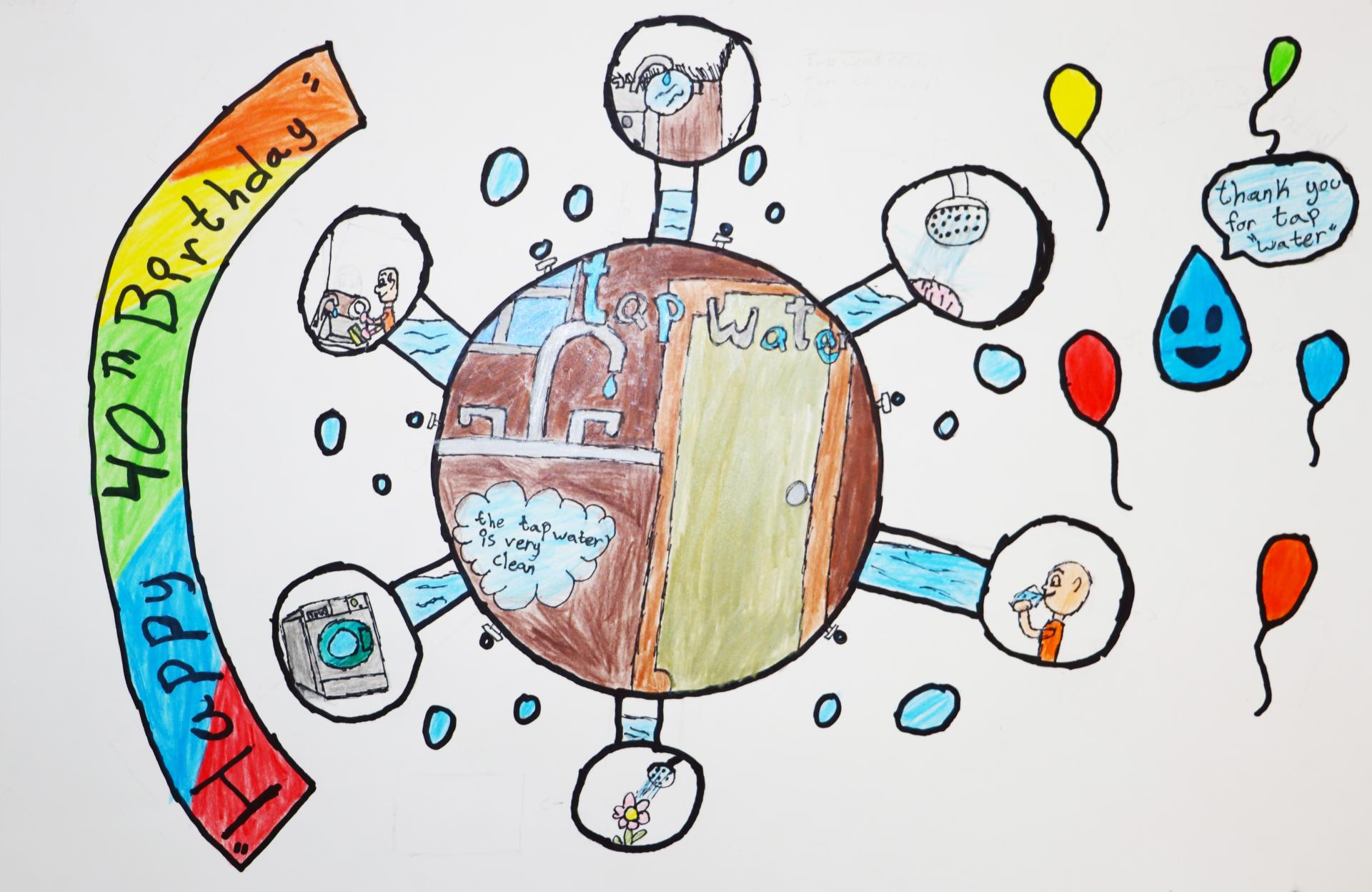
Honorable Mention Winner, Grades 9-12
Emily Ly
Grade 9, Randolph High School, Randolph
Chakara Cardillo, Teacher
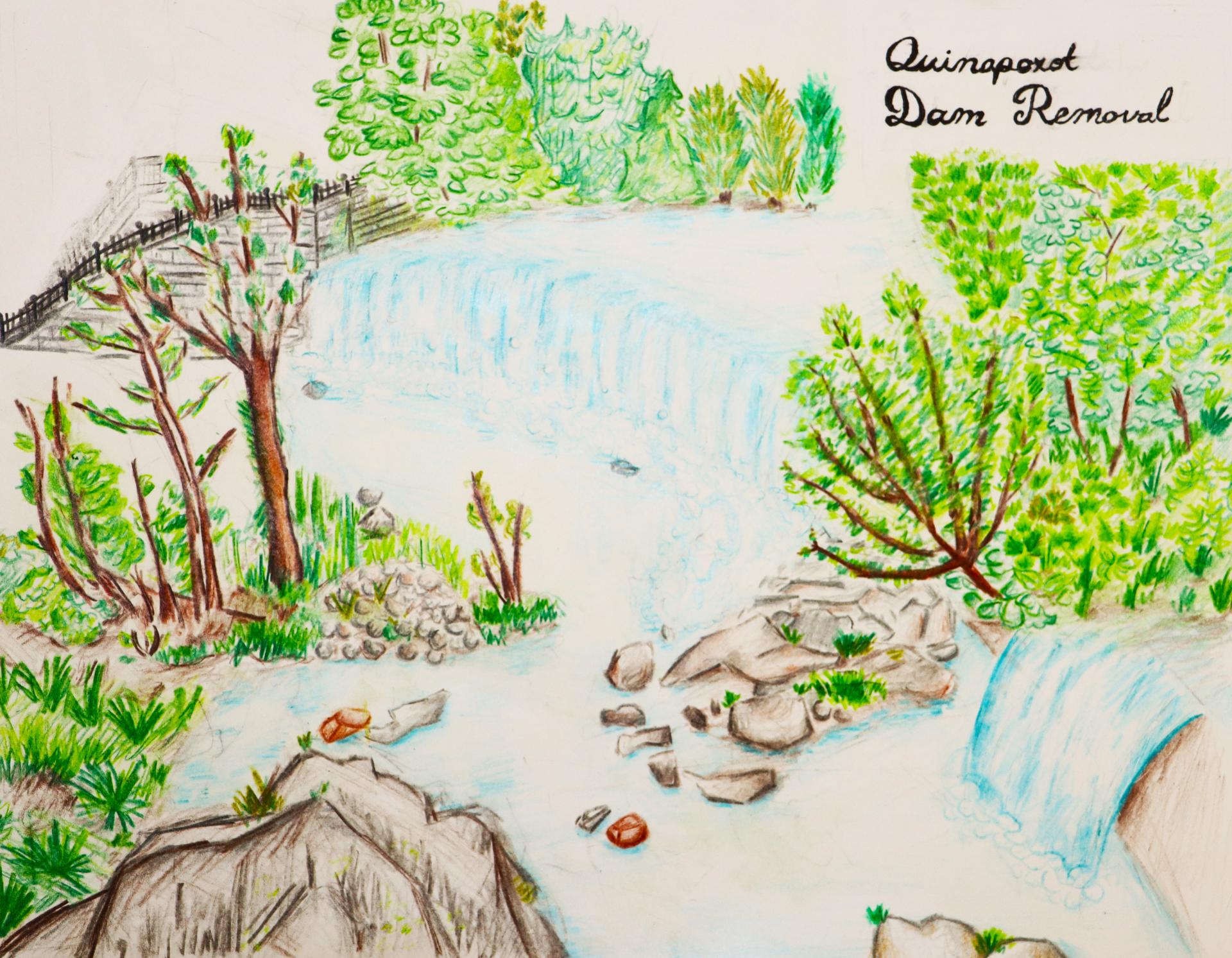
Essay Contest Winners, Grades 3-5
| Essay Contest Winners, Grades 3-5 | ||
|---|---|---|
| 1st Place | Emma McCormick | Barrows School, Reading |
| 2nd Place | Felicity Sullivan | Galvin Middle School, Wakefield |
| 3rd Place | Isla Schneider | Forestdale School, Malden |
| HM | Clare Mingo | Galvin Middle School, Wakefield |
| HM | Ethan Pham-Huu | South Elementary School, Stoughton |
| HM | Quinn McCarthy | Galvin Middle School, Wakefield |
| HM | Olivia Pisani | Galvin Middle School, Wakefield |
First Place Winner, Grades 3-5
Emma McCormick
Grade 4, Barrows Elementary School, Reading
Trudy Baer, Teacher
Every Drop Counts – Celebrating 40 Years of MWRA’s Clean Water
I take a long sip of cool refreshing water and think how lucky I am to have such clean water in my house. Do you know that 60% of the human body is made up of water? Every drop we drink becomes a part of us! For 40 years, the hardworking people at the MWRA have made sure our water is filtered and safe to drink. That’s why the MWRA is so important to our health and well-being.
I have two favorite MWRA projects that I want to highlight. Both projects are in Lexington, which is extra special because my dad works there, and there’s a super cool biking tail I ride on in the summer. And if I ever forget my water bottle, I can easily stop to take a drink at a water fountain.
The first project that I want to share is called the Weston Aqueduct Supply Main Rehabilitation. For four years, the MWRA rehabilitated the really old water pipes that were about 100 years in age! This project helped at least 250,000 people in towns like Waltham, Watertown, Belmont, Lexington, Bedford, Arlington, Somerville, and Medford. It even helped people on the North Shore during emergencies! (That’s a LOT of people.)
The second project that the MWRA is working on at the moment is the Northern Extra High-Pressure Zone Improvements. This project will improve the water mains and pumping stations that provide water to Arlington, Bedford, Belmont, Lexington, Waltham, and Winchester. I go to a piano school in Winchester, and I wouldn’t want to get sick from drinking dirty water there! (Though a day off from school would be pretty nice). This project includes three construction packages and will install up to 23,100 linear feet of new water main. No wonder it might not be finished until 2027!!!
Now, since it’s the 40th birthday for the MWRA, let’s wrap it up with a fun birthday song:
“Happy 40th Birthday, dear MWRA,
You keep our water clean every day.
Your fresh water makes us all shout, ‘HOORAY!”
We celebrate you in every single way!”
Learning about these projects taught me how updating our water pipes can help so many people. It makes me thankful to know that the MWRA is taking care of our water, which helps my family, friends, and even people I’ve never met. Happy 40th birthday, MWRA, and thank you for keeping our water safe and clean!!!
Second Place Winner, Grades 3-5
Felicity Sullivan
Grade 5, Galvin Middle School, Wakefield
Eleanor Yessaian, Teacher
MWRA Project About the William A. Brutsch Water Treatment Facility
Plop! I drop into the reservoir right next to my friend Droppy.
“Wow!” I exclaim, awestruck. “This is so cool! Mom has told me about this before, but I never imagined it would be like this!” The bright blue sky loomed over me and Droppy, and there was murky water in the lake we were in.
That morning, Mom had woken me up with two words: “It’s time.” I had been so excited, slipping and slithering all around. I had been told about this journey many times before, and had always wondered what it would be like and when I would get to go on it.
I was beginning to get very dirty and polluted and needed a bath, so I had to go on a long and eventful trip to become cleaned and treated. That day, Droppy and I had met up at our favorite spot, the murky puddle by Ash Street, and we learned that we had both gotten lucky enough to be in the same reservoir group together! We had both squealed with excitement at the same time, drifting around the puddle happily.
“This is the best day of my life, Drippy!” Droppy had squealed.
“I know, right?!” I shrieked right back enthusiastically.
Now we were here, sailing through the Quabbin Reservoir, about to get cleaned up, and it was even better than I had expected!
I was gliding through the reservoir gracefully, connected to the entire group so that I wouldn’t get lost, (which I was known for doing quite a bit) and it was even better than I had imagined!
Me and Droppy were connected at the hip, talking and gaping at the huge aqueduct all the way.
“Now,” shouted our guide, Mr. Waterman, “we are in the Quabbin Reservoir, and we are very lucky to be here, about to get cleaned, so don’t goof off,” he gives me a pointed look, “because we are about to go into the William A. Brutsch Water Treatment Facility to get treated and cleaned!” An excited cheer escapes from one droplet, and soon everyone is cheering and swimming forward like crazy.
Once we got to the facility, I looked around, seeing the brilliant blue sky above me, and all of the green grass surrounding the circular pool of water that I’m swimming in. There are many machines around our pool-like structure that we’re swimming in, and there is a big walkway going over the pool that leads to a block in the middle of it.
Soon, I began feeling as if an electric buzz was rushing through my body.
“Ahh!” I shrieked, grabbing hold of Droppy. “Is this supposed to happen?” I was shocked and scared, and I could tell that Droppy was, too, because she was holding on to me like it was her last second on earth.
“Don’t worry!” Mr. Waterman exclaimed to the group with a chuckle, “we’re just entering the William A. Brutsch Water Treatment Facility! You feel weird because the sodium hypochlorite, which is a form of chlorine, is rushing through you all! You are also feeling the ultraviolet, or UV light that is disinfecting you all. It is killing any pathogens that might be present, and the sodium hypochlorite helps do residual disinfection, which is protecting your quality as you travel through the local pipeline.”
“Wow!” I exclaimed. “I never knew that! That’s so cool!”
“I know, right?” Droppy agreed, looking awestruck.
The electrocuting feeling began feeling normal a few moments later, and I began swimming forward quicker, with Droppy struggling to keep up.
“Wait up!” She called out, breathless, “I wasn’t on the swim team when we were younger like you!”
I halted, waiting for her, then laughed, turning around to look at her. “Oops, I guess I forgot,” I said good naturedly, chuckling.
She catches up to me, and we quickly swim towards the aqueduct, catching up with the group. After we pass through the water treatment facility, we enter a dark tunnel.
“We are now in Chicopee Valley Aqueduct,” Mr. Waterman announces.
“Cool,” I say, looking around. The walls are made of some kind of metal, and whenever there is a sound, it echoes through the entire tunnel.
“I know, right?” Droppy says, preoccupied with staring at the tall, looming ceiling above us. “This is amazing,” she gasps.
I turned to Mr. Waterman. “How far away are we?” I asked.
“Probably around 5 hours, or 4 hours and 30 minutes,” he says.
“That long?” I ask, amazed, “wow, this must be a long aqueduct!”
Mr. Waterman laughs. “You got that right!” He said, smiling. “This aqueduct is around thirteen miles long!”
“Wow!” Me and Droppy both say in unison, amazed.
“That’s super long!” I exclaimed, mouth on the floor.
“I know, right!” Droppy answered, gaping.
Mr. Waterman laughed. “Don’t worry,” he said, chuckling, “I think that you guys will enjoy the journey!”
A few hours later, after a long journey through many twisty tunnels, our group finally arrived at the town of Chicopee.
“Now, this entire time, we have been stored in the Nash Hill Covered Storage Tank, and now we are in Chicopee, about to be distributed into many different houses to clean, hydrate, and help many people. We are going to go into many different pipes and into many houses, helping many people in many different ways.” Mr. Waterman shouts.
We come to a dead end with many different tiny pipes connected to the walls. I can’t see through them because it is so dark, and, just as I’m about to go into one to see what is on the other side, Mr. Waterman makes an announcement, causing me to turn back around and swim back to the group.
“Okay, now, you guys are all going to follow me into this pipe,” he says, motioning towards a pipe on the far left. He begins swimming towards it, and we all begin to do the same, with me and Droppy holding hands so we wouldn’t get separated.
Right when we made it to the pipe, we whoosh through, its force so strong that I didn’t even know was possible.
“Ahh!” I shriek, laughing while holding onto Droppy like my life depended on it. She screams right back while giggling, too.
We hold onto each other for dear life until we finally make it to the end of the pipes, whooshing out of a sink and into a little girl’s water bottle!
“Felicity!” Her mom shouts, “are you ready for lacrosse?”
“Yep!” The girl calls out. “I’m just filling up my water bottle!”
“Okay, sounds good!” The girl’s mom replies, walking into the kitchen. The girl twists a cap onto the water bottle, and everything goes dark.
“Well,” I whisper to Droppy excitedly, “I guess we’re headed to a lacrosse tournament now!”
Third Place Winner, Grades 3-5
Isla Schneider
Grade 5, Forestdale, Malden
Pamela Skinner, Teacher
Lead Pipe Removal Poem
The MWRA grant money
For problems in the community
Such as lead pipe removal
Workers help take care of the removal
They do this for clean water
Instead of poisoned water
The side effects are pretty bad
Especially if you’re about to give birth to a lass or a lad
Since the pipes are corroded
In the road
Workers dig
And dig
They work
And work
Until it’s replaced
And erased
But when you’re driving don’t get grumpy
The roads will soon not be bumpy
So thank MWRA
For saving the day
Honorable Place Winner, Grades 3-5
Claire Mingo
Grade 5, Galvin Middle School, Wakefield
Eleanor Yessaian, Teacher
COVID-19 Wastewater Tracking
The Massachusetts Water Resources Authority (MWRA) was among the first in the country to start testing wastewater for COVID-19. They started testing wastewater for COVID-19 in March, 2020, right after the pandemic arrived in the United States. They partnered with Biobot Analytics, a Cambridge, Massachusetts-based company.
Wastewater had never been used to track a respiratory virus before. Wastewater testing is more accurate than people testing at home and reporting it. The testing also gives early warning of outbreaks to communities because you can shed your virus into your wastewater days or weeks before you start to show symptoms. It’s estimated that about 100% of Boston’s developed area is covered by wastewater sampling sites.
Wastewater tracking helps hospitals prepare for when they may need more staff if COVID levels spike. Three weeks after wastewater levels spike, hospitalizations spike.
This paved the way for using wastewater to track community outbreaks of other respiratory viruses. Today, you can visit the MWRA website to track your community’s COVID, RSV, and flu levels.
THANK YOU, MWRA!!!!!!!!!!
Honorable Place Winner, Grades 3-5
Ethan Pham-Huu
Grade 5, South Elementary School, Stoughton
Julie Laquidara, Teacher
“The Massachusetts Water Resources Authority has been around for 40 years. Wow, I didn’t know that!” My mom surprisingly reaffirmed after I read its history to her. “Yeah, and they have been providing water and sewer services to 3.1 million people in our communities. They also have done so many awesome projects, Mom, such as the Quinapoxet Dam Removal, Intermediate High Pipeline Improvements, Northern Extra High Pressure Zone Improvements and many more.” I told her and continued. “But Mom, the MetroWest Supply Tunnel is one of the best projects I have learned about.” “What made you think it’s so great?” She asked. “Let me tell you mom. It enhanced the security, capacity, and reliability of water for more than 2.3 million people in 40 communities of Massachusetts.” I answered and didn’t stop there. “The old water tunnel had many leaks, aging valves, failure of the Hultman could have caused nearly complete interruption of Boston’s water supply. This would have been a disaster for the region’s public health, safety, and economy.” “That would be very bad. How much did the new tunnel cost?” Mom leaned her elbows on my bookcase and enquired. “The total program budget set in 1995 was 728 million dollars. Total program estimated completion costs were 665 million dollars including construction, design, and management.” I relayed and went on. “The construction took over 7 years but, in the end, it was worth it because it greatly enhanced the security, capacity, and reliability of water for millions of us.” “Nice! But how did it help us?” She asked eagerly. “The new system is providing us with more and safer water to use. And Mom, safer water equals healthier life.” I emphasized. “That is for now Mom. I need to work on my paper!” I added. She understood that meant no more questions. She smiled as she walked out of my room. “Oh Mom, I forgot to tell you they were at my school last week to teach us all great information about water.” I shouted out to her. “You need to tell me more about it at dinner.” She shouted back.
One beautiful, sunny Saturday afternoon, my friends Bob, Tristan, Colin and I were at the park playing soccer. “I am the best soccer player of the team.” I declared. “You’re definitely not.” Bob strongly disagreed. “I am better than all of you.” I insisted. “Oh really? 1v1 me right now then.” Bob challenged me. “Sure.” I replied. We played for a while until Bob was almost out of breath. “I am so thirsty but forgot my water bottle at home.” He spoke with a quivering voice. “Go drink some water from the bubbler over there”. I suggested. “There is no way that I am going to drink that water. It’s not clean.” He frowned. “Of course, it is. What do you mean it’s not clean?” I sounded irritatingly. “Water in that bubbler could be contaminated somewhere in the system.” Bob continued. “No way. You must not know about the MetroWest Water Supply Tunnel.” I quickly responded. “What in the world is that?” he asked. “It was one of the MWRA projects. It replaced a water tunnel that was old, leaky, and insecure. Back then the water in this bubbler could have been contaminated, but now it is 100% not.” I explained. “Very interesting, can you tell me more?” Bob enthusiastic. I quickly sketched a diagram of the new tunnel on the playground and explained to Bob how it works. Then, I also drank some water from the bubbler just to prove to him it was clean. “Wow, I did not know all these facts. You sound like an expert Ethan.” He admitted. Then he began drinking the water from the bubbler and so did our friends Tristan and Colin, who also have been listening intensively to my water lesson the whole time. “Maybe I will make some posters about MWRA, our water resources and saving water to post around the parks so people could be aware of this organization and all of the awesome works that they do”, thinking in my head.
The MWRA has helped people by improving our water in many ways in the last 40 years. The MetroWest Water Supply Tunnel was one of their accomplishments. People should be grateful to have clean, safe water to use every day. Every drop of water out of our faucets is money and hard work. Next time you use the water, think about the hard work the MWRA people have put in to making sure we have enough safe and clean water to use. So, don’t forget to use water wisely and be grateful to have the MWRA in our communities. Remember, we cannot live without safe water. Save water + Save money + Save life.
Many thanks to the MWRA and Congratulations on 40 years of service!!!
Honorable Place Winner, Grades 3-5
Quinn McCarthy
Grade 5, Galvin Middle School, Wakefield
Heather Cook, Teacher
Northern Extra High Pressure (Zone)
Northern Extra High Pressure (Zone)
Providing water to six communities
Norther Extra High Pressure (Zone)
Supplying 12 million gallons of water per day from the MWRA
Norther Extra High Pressure (Zone)
Aging infrastructure pushing down on me
Pressing down on you
We need to improve redundancy,
Increase reliability
You don’t need to worry
Contract 6522 is here
New 24inch water mains,
New community meters will appear
Northern Extra High Pressure (Zone)
3 phases of construction
Northern Extra High Pressure (Zone)
There will be no interruption
Northern Extra High Pressure (Zone)
Will be completed in ’27… For everyone!
*To the tune of “Under Pressure”, by David Bowie and Queen
Honorable Place Winner, Grades 3-5
Olivia Pisani
Grade 5, Galvin Middle School, Wakefield
Cindy Fitzpatrick, Teacher
THE QUINAPOXET DAM REMOVAL
One of the projects that the MWRA had been involved with is the Quinapoxet Dam Removal. The Quinapoxet Dam is an Earthen mound and stonework horseshoe dam that spans the Quinapoxet River from bank to bank. This dam is owned by the Commonwealth of Massachusetts and is under control of the DCR, its full name is the Division of Water Supply Protection, which is funded by the MWRA! The Quinapoxet Dam was built in 1095 at 250-feet long and 18-feet high. The Dam needs to be removed to replenish natural fish passage, enhance recreational opportunities, and better aquatic habitats. To prepare for the dam removal, they protected the mussels living in the dam. To protect them from the removal, they moved the mussels upstream. In early September of 2024, many volunteers combined with the staff members of MassWildlife, DCR, and DER (Division of Ecological Restoration) to move eastern pearlshells from places by the dam to choose areas upstream in the Quinapoxet River. By using view buckets, masks, snorkels, and sharp eyes, the team searched. About 500 direct feet of stream. They were counted, placed in mesh bags, placed into coolers, and gently placed in a safe habitat along a 1,000-foot stretch of river water. When the reservoir was created, the dam had been finished as a part of the lower waterway widening and collectively served to reduce settling impact on the reservoir. However, the river system has stabilized over the last 115 years. In conclusion, the Quinapoxet Dam Removal is just ONE of the many projects since 1985 that the MWRA has been involved in. Thank you MWRA for all your hard work, we really appreciate it!
Essay Contest Winners, Grades 6-8
| Essay Contest Winners, Grades 6-8 | ||
|---|---|---|
| 1st Place | Ford Choate | McCall Middle School, Winchester |
| 2nd Place | Maya Cunnane | McCall Middle School, Winchester |
| 3rd Place | Ella Sin | McCall Middle School, Winchester |
| HM | Rex Alvares | McCall Middle School, Winchester |
| HM | Mia Vallarelli | McCall Middle School, Winchester |
| HM | Natalie Coronella | McCall Middle School, Winchester |
| HM | Sara Babish | Andrews Middle School, Medford |
First Place Winner, Grades 6-8
Ford Choate
Grade 6, McCall Middle School, Winchester
Meg Capobianco-Burns, Teacher
Sal Mon and the Salmon: How MWRA is Helping Both Fish and Humans with the Deconstruction of the Quinapoxet River Dam
As waters near the dam slosh around, a landlocked salmon with a need to move more swims in circles. He longs to explore the water past the dam, but the behemoth towers 18 feet high – many times higher than the salmon can jump. Sadly, he swims away, a dejected frown on his face.
Aside from robbing him of his freedom, the dam is breaking down, causing safety issues. As the salmon swims away, a medium–sized chunk of rock nearly hits him! He dodges out of the way at the last second, but the possible near–death experience shakes him. Another worry of this damn blocking him from new places.
When the salmon returns the next day, he is overcome with joy. Pieces of the dam are being taken away! He swims in circles with happiness.
Over the course of many more days, the salmon returns to the dam slowly being deconstructed. Each day, his heart slowly fills up with hope. As the water runs around him, jumps out of the water, overjoyed.
Eventually, the dam is gone. The landlocked salmon is very happy, and he enters the thirty – five new miles of river to live, swim and play in. Finally, the fish is happy.
MWRA’s effort to deconstruct the dam will have a positive effect on the fish, both by eliminating a safety hazard and giving the fish more room to move around and enjoy themselves. But the fish aren’t the only ones who will benefit from the deconstruction of this dam – it will benefit people, too.
Sal lived by a river – the Quinapoxet River, to be exact. He longs to enjoy his favorite sport – fishing – but an annoying dam makes it hard for him to do so. Sal heads to work, where he hears a couple of his coworkers whispering. “Sal!” one cries. He walks over.
“What is it?” he asks, an air of curiosity coming over him.
“You love fishing, right?” one coworker replies.
“Yeah, I do.” Sal is getting more and more interested in this conversation. “Why?”
“You won’t believe it.” Says the other coworker. “They’re taking down the dam!” Sal is shocked with the realization. He gasps for a second, then erupts with excitement.
“Yesssssssss!” he half-squeals, half-hisses. His coworkers clap him on the back.
“We’re happy for you, Sal.”
When Sal returns home, he looks at the news. He notices that the dam is being deconstructed. The confirmation only excites him further.
For days, Sal heads to the dam, where deconstruction has just started. One of the workers asks what he’s doing, and he replies, “Just waiting before I can go fishing!”
“Oh, a fellow fisher!” booms the worker. “The name’s Bass.”
“Sal,” Sal replies, “Sal Mon.”
Sal watches as the dam fades away. Occasionally, he spots fish in the water. He can swear he keeps seeing the same one – there is a small red fish – shaped blob on his cheek – but he has no real way to tell, though the little fish – he thinks it’s a salmon – looks happy about the dam’s deconstruction as well. He’s swimming around in circles, jumping out of the water with what Sal can swear is a joyful smile. Sal hopes the little salmon finds whatever he’s looking for.
After what feels like forever, the dam is finally gone. Sal and his new best friend, Bass, are ready to enjoy a full day of fishing. As Sal equips his brand-new fishing rod, bought especially for this occasion, he reminisces about the day, not so long ago, that he learned of the dam’s deconstruction. That day, he had been bored like usual, not excited for whatever the day could possibly bring. Since then, however, there’s been a spring in his step, a new excitement for things that wasn’t there before.
Finally, Sal reaches the planned fishing spot. It’s late in the afternoon, specifically 5:53. Sal can see fishers all down the river, ready, like he is, for the big day. Bass is there waiting with his rod in hand. “Come on over!” he yells. Sal scurries over and sits down, excitedly tossing his rod in the river. It’s a few minutes before anyone gets a bite, but slowly they become more and more common. Soon, Sal feels a tug at his line. He begins to reel it in as Bass gives words of encouragement. Then the fish pops out of the water! Sal does a double take – it’s the same one he saw at the dam! Sal hesitates – this is his first catch, after all – but as he watches the desperate fish gasp for air, he remembers how the fish was just as happy as he was about the dam being constructed, how they shared that feeling of excitement.
Sal releases the fish back into the river.
“Why’d you do that ?” Bass asks.
“Because these little guys have as much of a right to the river as we do.”
Currently, a plan to deconstruct the Quinapoxet Dam is being workshopped. This project will benefit fish by eliminating safety hazards and giving them more space to roam around. On top of that, it will benefit humans by giving them easier access to a recreational/fishing area. This project will also restore nearby vegetated wetlands and habitat for animals in the river, among other benefits. By the time the project is over, everyone involved will benefit.
Second Place Winner, Grades 6-8
Maya Cunnane
Grade 6, McCall Middle School, Winchester
Meg Capobianco-Burns, Teacher
MWRA (YMCA)
Thank you, for keeping our harbor clean, I said
Thank you, for protecting hygiene, I said
Thank you, our waters peachy and keen
You did your job for us
Thank you, because now we can swim, I said
Thank you, cause it used to be grim, I said
Thank you, you went out on a limb
To save our harbor
It’s time to thank the MWRA!
It’s time to thank the MWRA!
You did so many things to protect the world
Clean water for boys and girls
It’s time to thank the MWRA!
It’s time to thank the MWRA!
It’s time to thank the MWRA!
You did so many things to protect the world
Clean water for boys and girls
Thank you for flushing our waste away, I said
Thank you, Cause our water’s grade A, I said
Thank you, you’re the talk of the bay
You cleaned waste, for us
Thank you, for the water we drink, I said
Thank you, cause now it don’t stink, I said
Thank you, for clean water for sinks
Now our water’s better
It’s time to thank the MWRA!
It’s time to thank the MWRA!
We’ve got water for sinks, and so much more
Don’t forget, it all came from the shore
It’s time to thank the MWRA
It’s time to thank the MWRA!
It’s time to thank the MWRA!
We’ve got water for sinks, and so much more
Don’t forget, It all came from the shore
Scan here to listen to the song:
Third Place Winner, Grades 6-8
Ella Sin
Grade 6, McCall Middle School, Winchester
Meg Capobianco-Burns, Teacher
MWRA at 40: A Flowing Legacy
Forty years of water’s might,
Flowing clear, so pure and bright.
From Quabbin deep to every home,
A legacy of waves and foam.
Through tunnels vast and pipes so wide,
A hidden force, a source of pride.
The harbor was cleansed, the rivers bright,
A mission strong, a future right.
No longer do the waters bear
The weight of waste, the need for care.
Deer Island stands, a beacon true,
Of all the work MWRA can do.
From every drop in every stream,
To every home where waters gleam,
MWRA, your task endures,
Protecting what the world ensures.
So here’s to forty years and more,
To cleaner waves upon the shore,
To rivers fresh and skies so blue -
MWRA, we honor you!
Honorable Mention Winner, Grades 6-8
Rex Alvarez
Grade 6, McCall Middle School, Winchester
Meg Capobianco-Burns, Teacher
How Boston Gets Its Water: The True Story of How MWRA Saved the Boston Harbor and Also Supplies Us Our Water
Look back to pictures of the Boston Harbor 50 years ago, before MWRA began. These pictures would probably consist of green or brown water. But things have changed since then. MWRA (Massachusetts Water Resources Authority) has cleaned our harbor, which used to be the dirtiest in America, and supplies us with our water.
First, our harbor used to be very dirty. MWRA has made our harbor into something that was probably unimaginable to those who lived in Boston 50 years ago. Back then, gross disgusting things were always in the water. According to The Strange History of Deer Island, “Things (would) wash up on the shore of the beach while I was just a youngster swimming that if it happened today, it would cause full evacuation of the entire beach.” This quote explains how dirty and toxic Boston Harbor used to be. The problem was that for centuries, people had been throwing their trash and sewage into the harbor. Now add that to the Boston Tea Party, and you will start to realize just how bad the water quality used to be.
So, yeah, Boston Harbor used to be really nasty.
But the story doesn’t end there. In 1980, a federal order was issued after Boston Harbor got itself a reputation for being the “dirtiest harbor in America.” MWRA was established, and they were tasked with cleaning our harbor. They used modern, state of the art equipment to clean our harbor (also how they clean our dirty water today). First, they used machines to push the trash out of the water as the water flowed through the facility. Those giant eggs you see when you are looking at Deer Island? That’s the next step. They are called digesters and that’s exactly what they do- they use bacteria and chlorine to digest (eat) sludge, which consists of the toxic chemicals that affected our harbor the most, the things that made it dangerous to your health. Really, it’s kind of like stomach acid burning the food that you ate. Finally, they use more chemicals to get rid of the chlorine used to digest the sludge. Probably the most significant part of this process is that MWRA actually makes energy out of this. During the second step, a lot of the sludge that is digested becomes methane gas, a key component of natural gas. MWRA can then use this to power the machines used in this operation. This is how MWRA cleaned our harbor.
Finally, MWRA supplies Boston and many of the surrounding towns with water. According to What is Deer Island Wastewater Treatment Plant? MWRA provides water for 51 communities around Boston, “serving over 2.5 million people.” So how does MWRA get water to all these people? Well, the answer is a big one. The water starts at the Quabbin Reservoir and the Wachusett Reservoir, two huge reservoirs to the west (of Winchester). From there, it flows through some of MWRA’s tunnels. They use a lot of these to deliver clean water to many different communities near Boston. In fact, according to MWRA, they have “about 105 miles of active tunnels and aqueducts (mostly 10 to 14 feet in diameter) and 39 miles of standby aqueducts.” That’s a lot of tunnels! Anyway, the water goes through Carroll Treatment where the water is made into clean water for drinking, toilets, showers, and other stuff. Once it is fully prepared, it continues through the pipes and is distributed to millions of people’s homes. After it has been used and is dirty, it flows through sewers and is sent to the Deer Island Wastewater Treatment Plant, where the MWRA cleans the water thoroughly before sending it down even more pipes that lead deep into the Atlantic, where the water is left in the ocean. The water is so clean after being treated at Deer Island that it is actually cleaner than more of the world’s drinking water. This is how much of Boston and its suburbs get their water.
In conclusion, MWRA has succeeded in many projects, but some of their finest have been cleaning the “dirtiest harbor in America” and supplying millions of people with water every day. MWRA has saved Boston Harbor from being dangerous forever and everybody in Boston owes their clean water to MWRA. So thank you, MWRA, for providing Boston with some of the cleanest water in the world.
Honorable Mention Winner, Grades 6-8
Mia Vallarelli
Grade 6, McCall Middle School, Winchester
Meg Capobianco-Burns, Teacher
To: MWRA
Hello, my name is Mia, and I am writing this letter from the future. You must be in the year 2025. Wow, that was a long time ago. You may be wondering how this letter is possible. Our people have just invented a time machine, but we can’t go in it. Only letters can. This may seem unbelievable and shocking, but it was only possible because of you guys at the MWRA. We are writing this letter to say thank you for all you have done for the people of the future.
It all started back in 1984, so 40 years before 2025. This was when you began the seemingly impossible goal: cleaning your wastewater. Humans were not very smart at the time. They did stupid things, like wasting water. It’s as if they did not realize that water had to be maintained and kept clean at healthy levels! The MWRA helped us so much by building a treatment facility to restore wastewater and make it clean and healthy! These futuristic people would not even be here if all of the water people used just went to waste. The people of the future send big thanks. But you didn’t stop there!
Before MWRA, all the dirty used water was dumped into the Boston Harbor with very little cleaning. If MWRA had never existed, the Boston Harbor would be dirty, unhealthy, and extremely dangerous. Let’s just say the future of Boston would not be celebrating their dirty water anymore. It would be way too out of hand. But instead of all that happening, you thought ahead and prevented the near future. You took action cleaning up our Boston Harbor! With 40 years of hard work and dedication, the Boston Harbor went from dirty brown filth to clear, fresh, crystal water. But enough with what you already know. This letter is about what you have done for us in the future.
We are in 2065, so that is 40 years from 2025. A lot can happen in 40 years! Since 2025, the MWRA has achieved Braintree-Weymouth Pump Station Improvements, the Quinapoxet River Dam Removal Project, and even Weston Aqueduct Supply Main PRV Improvements! There are so many projects you have done that we can hardly name them all! But one things we are sure of is that each one of these special projects had a purpose. Take the Metrowest Water Supply Tunnel Project, for example. The MWRA noticed the problem. Before the new tunnel, the failure of Hultman could have caused a nearly complete interruption of Boston’s water supply. This would have been a disaster for the region’s public health, safety, and economy. So, they took action! Now, thanks to the MWRA’s hard work, Boston has a good, healthy water supply. What would the future be without the MWRA? Probably dirty and unsanitary!
So, whenever our high-tech robots march through the Boston Harbor, or our cars fly over Cape Cod, or when students teleport to Deer Island to participate YOUR competition, we give thanks to the MWRA of 2025 that helped us get to where we are today. Hey, that reminds me, this year is your 80th anniversary! Our theme this year is celebrating heroes of MWRA over the years. We want to know more about the everyday heroes that make the MWRA a success! Make sure to get back to us about that, because the students are waiting for a letter from you guys! All you have to do is invent the Mail Machine shown below. Good luck, and adios!
Honorable Mention Winner, Grades 6-8
Natalie Coronella
Grade 6, McCall Middle School, Winchester
Meg Capobianco-Burns, Teacher
I don’t remember anything before the truck. There I was, spinning in circles, as dizzy as a moth flying around a flame. I tried to remember something, anything, but everything was fuzzy. I was in a truck, I knew that much, but where it was going I had no idea.
I ended up at the site for what was soon to be the MWRA MetroWest Water Supply Tunnel. I was being placed in a large underground passage. It looked like I was being used for the lining. My name is Finnley, and I am a bit of cement. I was stuck in place, but at least this place was fun to watch! There were people with bright orange and silver jackets, yellow helmets, and big, clunky boots.
Over the next few weeks, or maybe it was months, I watched the workers. There were hundreds of them, and they were making tons of progress. I counted, and each time I got 598 people working at a time. The tunnel was almost fully lined with cement. It was rather nice because I had some cement to talk to. I was next to three other pieces. There was Amelia on my back left, Jackson on my right, and Alex, right in front of me. The tunnel must’ve gone on for miles and miles. I bet that there were a million pieces of cement, maybe even more.
I did much of the same for the next few months. Maybe they were years? Either way, I watched the employees, also known as sandhogs, work. There was a rhythm and a pattern to it. Once, they flushed a yellow liquid that smelled very strongly. Jackson said that it was chlorine, but I didn’t know what that is, although he said it was used to clean things and they were cleaning the tunnel with it. Why would they need to clean the tunnel? I soon learned that the tunnel was finished, and they were going to test it soon. Yes, I was happy here, I guess, but I thought about how nice it would be to see sunlight again, and I started making my plan.
A few weeks later, I heard a big rush, like what had happened when they disinfected it with chlorine. I wriggled and squirmed, stretching and pushing, but I wouldn’t come loose. Soon, the hundred million gallons of water were upon me, and I made one last attempt. I wiggled one final time, as hard as I could, and then, POP! I came loose just in time. The water washed me up and away.
Right now, I’m safe in the Atlantic Ocean, but wow, what a journey it was to get here! I traveled through a treatment plant, Carroll Treatment. After I was through the plant, I was carried down more tunnels, heading towards Metro Boston. Soon, I was heading up a tunnel, then down into a big white sink, and down the drain. I was back in a tunnel with a bunch of stinky wastewater. I thought the long trip was over, but then I came to another treatment plant! It was the treatment plant on Deer Island. I barely got through, and then I went under the sand in a tunnel, and finally, it dumped me and the former wastewater into Massachusetts Bay.
As I mentioned before, I am in the ocean, floating around. I love it here! There are fish and plants, and the water is so clean! Thinking back on the trip, it was a beneficial adventure. I learned that the water that whisked me away was from the Quabbin Reservoir. From tunnels, it traveled with me to a treatment plant. Once the water was clean, it because Metro Boston’s drinking water. After the water and I had gone through the sink, the water was now deemed wastewater, so it went to another treatment plant to clean it, and I was pulled with it. After it was through the second treatment plant, it was cleaner than a lot of the world’s drinking water. It was then flushed out into the Boston Harbor and Massachusetts Bay. When I was talking with Jackson, one of the pieces of cement I was next to in the tunnel, he told me how long the MWRA has been working hard on bringing clean water to and from Massachusetts. Now, they have been running for 40 years long! That’s my story, and I hope to see you soon!
Honorable Mention Winner, Grades 6-8
Sarah Babish
Grade 6, Andrews Middle School, Medford
Kerry Bronnenkant, Teacher
Wonderful Water
Massachusetts, Bay of glory
Once a dump
But now a story,
Full of a wonderful group of folks
You my friends are folk I speak of
MWRA you’ve done so much
You fixed our harbor
A marvelous feat to display
You cleaned our harbor
Stopped the wastewater by the tons
You tested and educated galore
Working tireless hours cleaning and innovating
Now it’s clean
But you do so much more
Managing wastewater
Making our taps safe to drink
In educating you do marvels
And your carbon footprint is going down too
There’s more to do and more to grow
But we came miles from where we were
Thank you thank you for our bay
Now we can use it to fish and play
It would still be a dump without you
Thank you thank you
We appreciate you!
Information about the Contest
Poster and Writing Contests for the 2024-2025 School Year
It's MWRA contest time! Once again the MWRA is sponsoring Poster and Writing Contests for students who live in or attend school in a community served by the MWRA.
2024-205 Topic for Poster and Writing Contests (PDF)
The Massachusetts Water Resources Authority (MWRA) was established in 1985 to provide wholesale water and sewer services to 3.1 million people and more than 5,500 large industrial users in 61 metropolitan Boston Communities.
Over the past 40 years, MWRA has been involved with many groundbreaking projects, including the cleanup of Boston Harbor as well as stewarding some of the nation’s cleanest and best tasting drinking water.
Students in the MWRA service area are invited to use their creative skills to design a poster and/or write an essay, poem or story detailing one or more of the projects that MWRA has been involved with since its creation in 1985.
We hope the students will have fun with this topic and learn some important facts in the process. Good luck to all participants!
Poster Contest (Grades K-12) |
Students are asked to use their creative skills to design a poster explaining the importance of water conservation. Posters should be no smaller than 8.5" x 11" inches and no larger than 18" x 24" inches. Posters received bigger or smaller than these dimensions will not be judged. POSTERS WILL BE JUDGED IN 4 CATEGORIES: Gr. K-2, 3-5, 6-8 and 9-12. |
Writing Contest (Grades 3-8) |
| Students are asked to use their creative skills to write an essay, poem or story explaining the importance of water conservation. Writing entries must be no more than 2 single-sided pages and may be typed or written neatly in ink. WRITING WILL BE JUDGED IN 2 CATEGORIES: Gr. 3-5 and 6-8. |
Deadline |
| Entries must be postmarked by Wednesday, March 12, 2025. Early entries are encouraged. |
Rules |
| Rules are included in the contest entry packet (PDF). |
Required Forms and Labels |
| Students may enter on their own if they live in or attend a school in the MWRA service area. Every group of student entries must have a Contest Registration Form and each entry must have a Student Label attached securely to the back of the entry. Forms and labels are included in the contest entry packet (PDF). |
Prizes |
Winners will be announced in April 2025. |
How to Submit Contest Entries |
All entries must be mailed to: MWRA School Program Early entries are encouraged! |
What Makes a Good Poster Entry |
| Make sure your poster is on topic. Don't try to include too many ideas or activities on your poster. A single message, clearly illustrated, is more effective. If you use lettering, make sure it can be read from across a room. And, don't forget to check your spelling! |
What Makes a Good Writing Entry |
| First, be sure your entry is on topic. As good as a piece might be, if it isn't on topic, it can't win a prize. Then, use your creativity to make your entry stand out. The reader should remember your work because there was something unique about it. An essay can be just as creative as a poem or dialogue, if it has a clear theme and is developed cleverly. Don't forget to check your spelling! |
Frequently Asked Questions |
| Questions and answers for teachers and students are included in the contest entry packet. |
Eligibility
Only schools located in the MWRA Service Area listed below are eligible to participate in the Annual Poster and Writing Contests. Schools located on Cape Cod and within the Quabbin and Wachusett Watershed are also eligible to participate.
| Chicopee | Peabody |
| Leominster | Saugus |
| Lynn | Southborough |
| Lynnfield | South Hadley |
| Marblehead | Swampscott |
| Marlborough | Weston |
| Nahant | Wilbraham |
| Northborough | Worcester |
| Braintree | Natick |
| Hingham | Randolph |
| Holbrook | Walpole |
| Lancaster | Weymouth |
| Arlington | Needham |
| Ashland | Newton |
| Bedford | Norwood |
| Belmont | Quincy |
| Boston | Reading |
| Brookline | Revere |
| Burlington | Somerville |
| Cambridge | Stoneham |
| Canton | Stoughton |
| Chelsea | Wakefield |
| Clinton | Stoughton |
| Dedham | Waltham |
| Everett | Watertown |
| Framingham | Wellesley |
| Lexington | Westwood |
| Malden | Wilmington |
| Medford | Winchester |
| Melrose | Winthrop |
| Milton | Woburn |
Questions?
Please contact Jacqueline Collins, MWRA School Program Administrative Coordinator at Jacqueline.Collins@mwra.com, (617) 305-5681.
